See Photos of Queen Elizabeth's 1994 State Visit to Russia
The Queen's trip to Russia, which followed Boris Yeltsin's trip to the UK, is depicted in season five of The Crown .
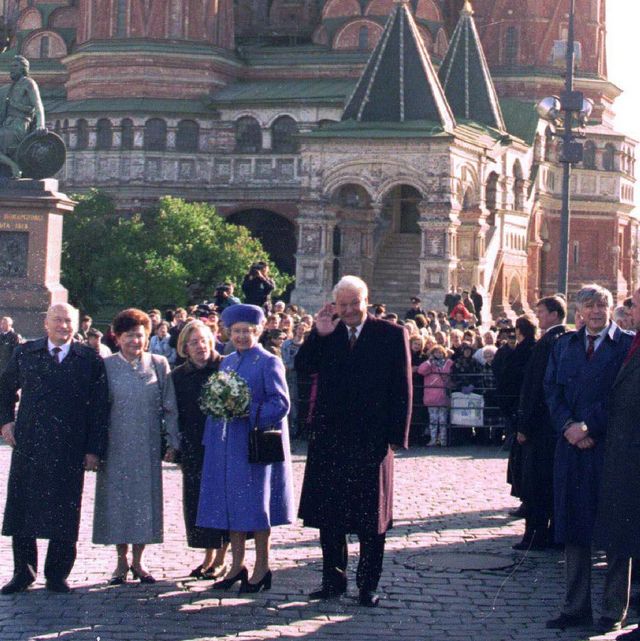
Here, see all the photos of Queen Elizabeth's 1994 trip to Russia, as shown on The Crown :
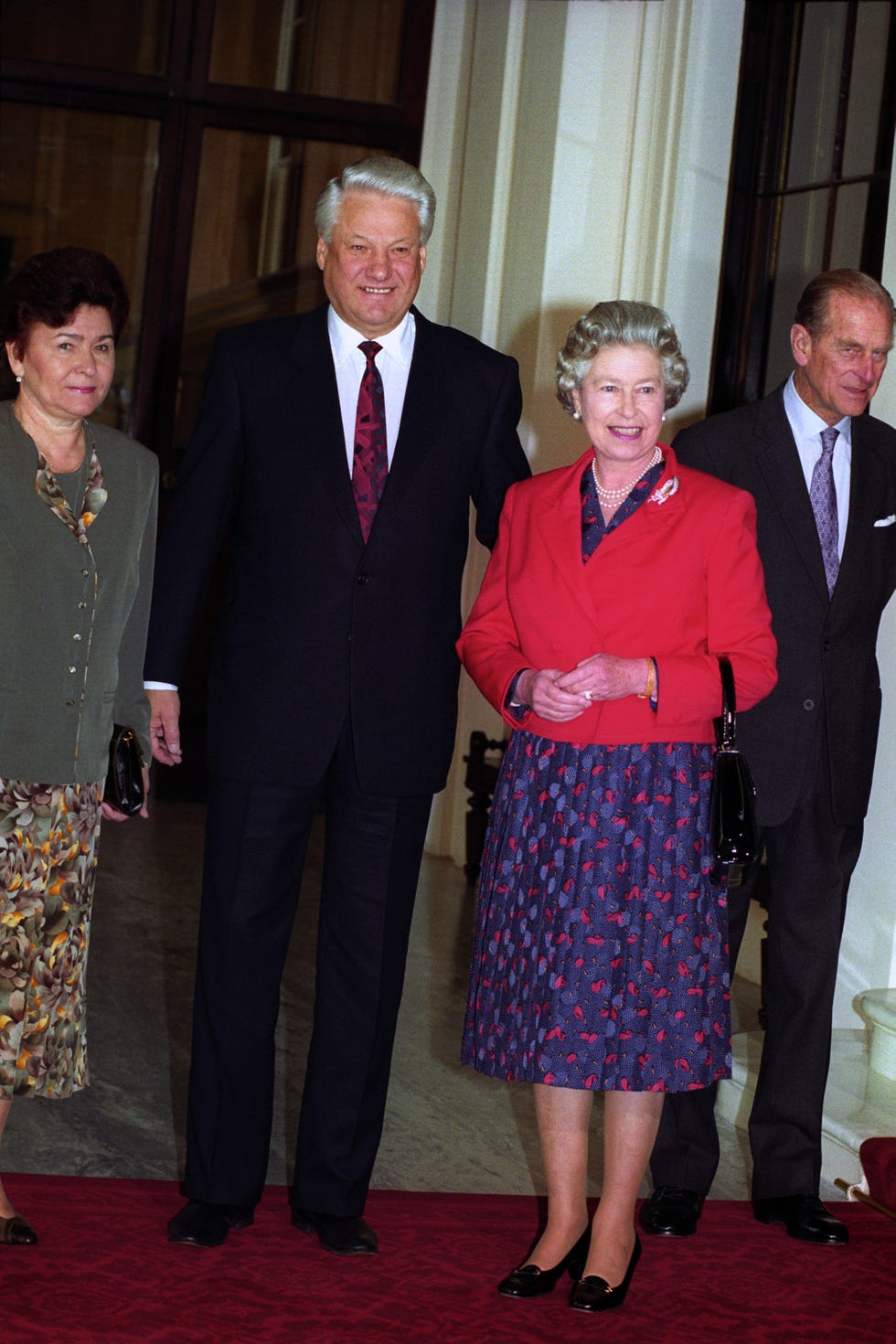
This is not from the State Visit to Russia, rather this is when Yeltsin visited the UK two years prior. Pictured are Naina Yeltsin, President Boris Yeltsin, Queen Elizabeth, and Prince Philip at Buckingham Palace.

State Visit, 1994
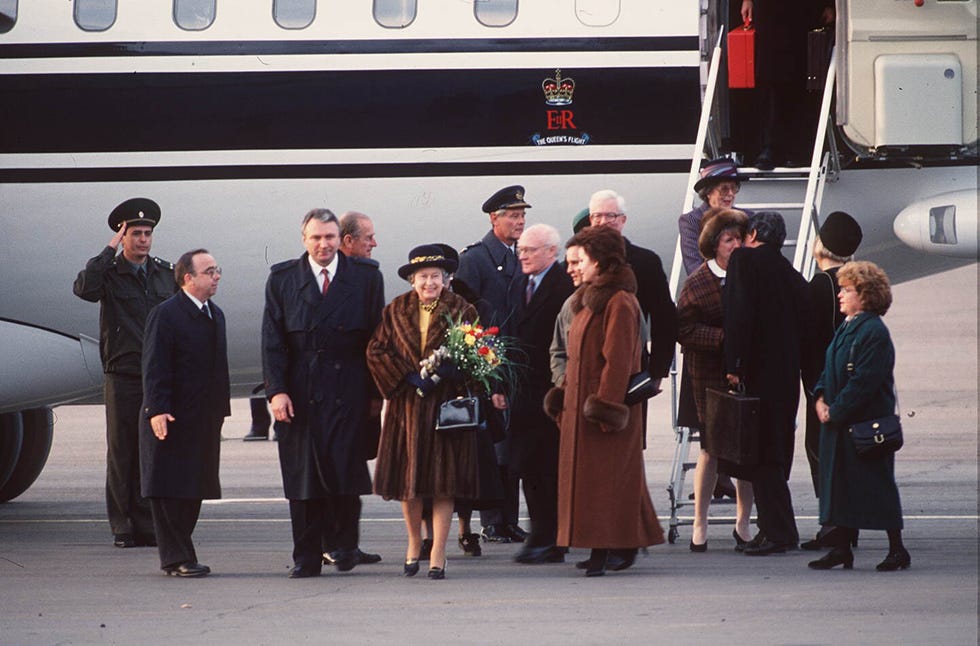
Queen Elizabeth is pictured arriving in Moscow, wearing a glamorous fur coat.
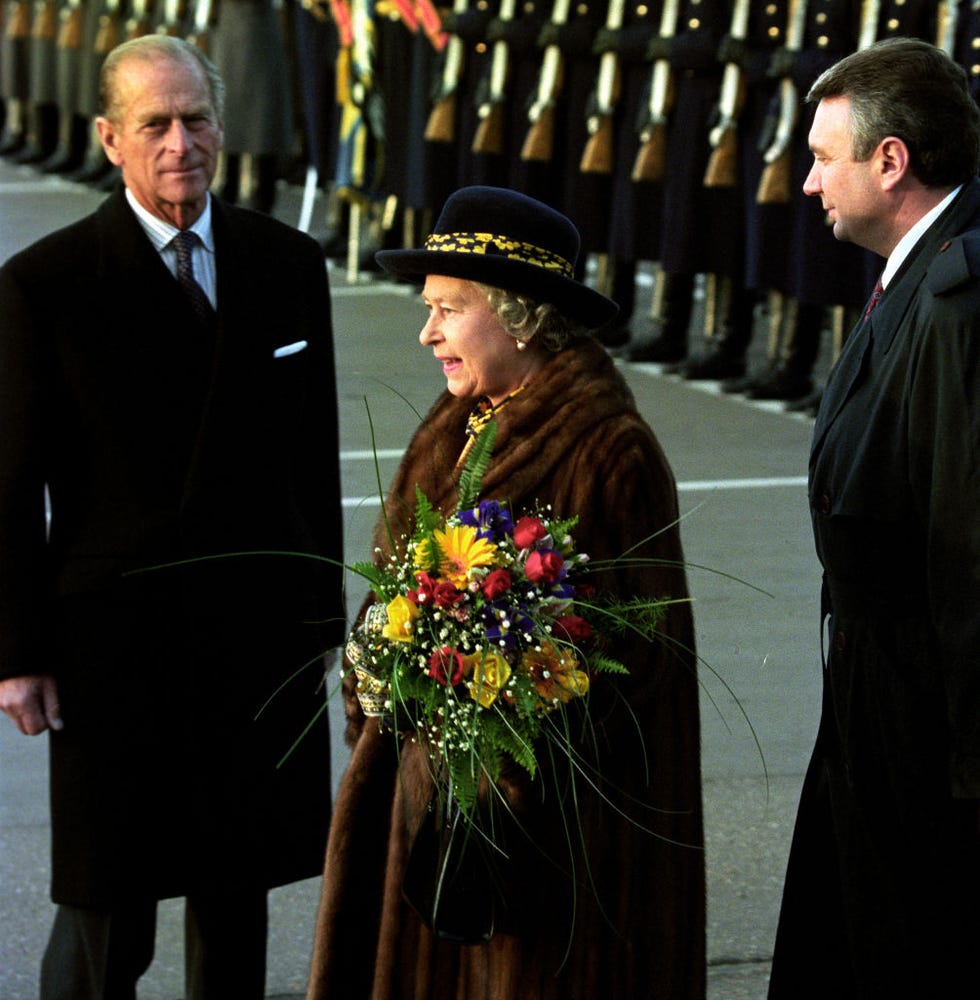
A close-up of the Queen and Prince Philip upon their arrival in Russia.
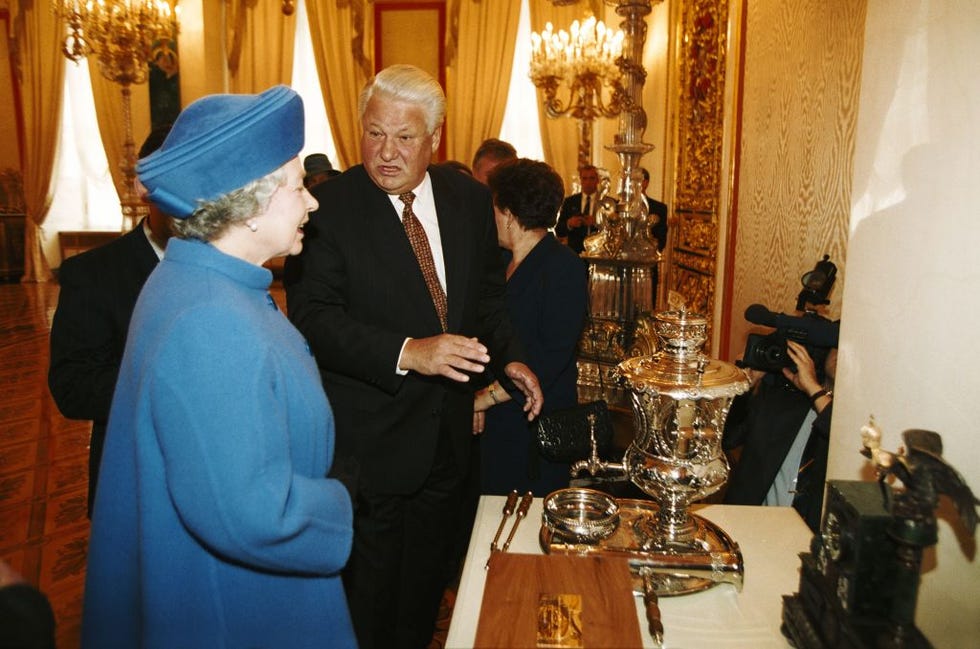
Throughout the trip, she was accompanied by Boris Yeltsin, who served as president of Russia from 1991 to 1999.
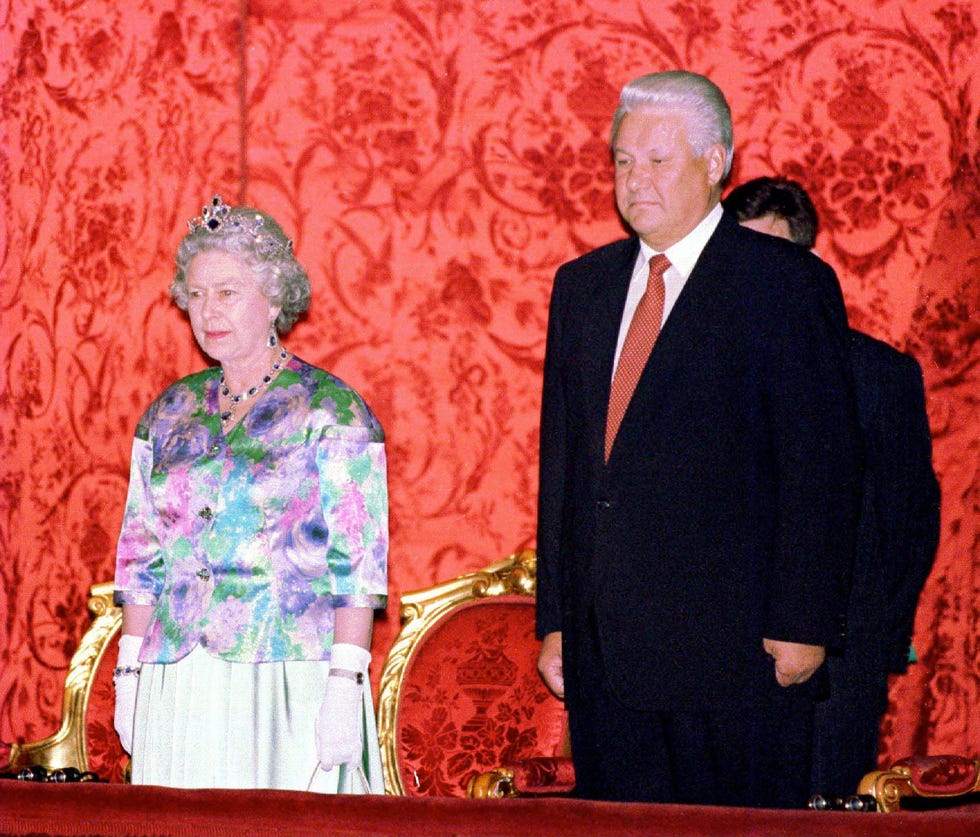
Queen Elizabeth was not the first British royal to visit Russia. In 1973, Prince Philip and Princess Anne attended a horse eventing competition in Kyiv, then part of the Soviet Union, and in 1994, Prince Charles visited Saint Petersburg.
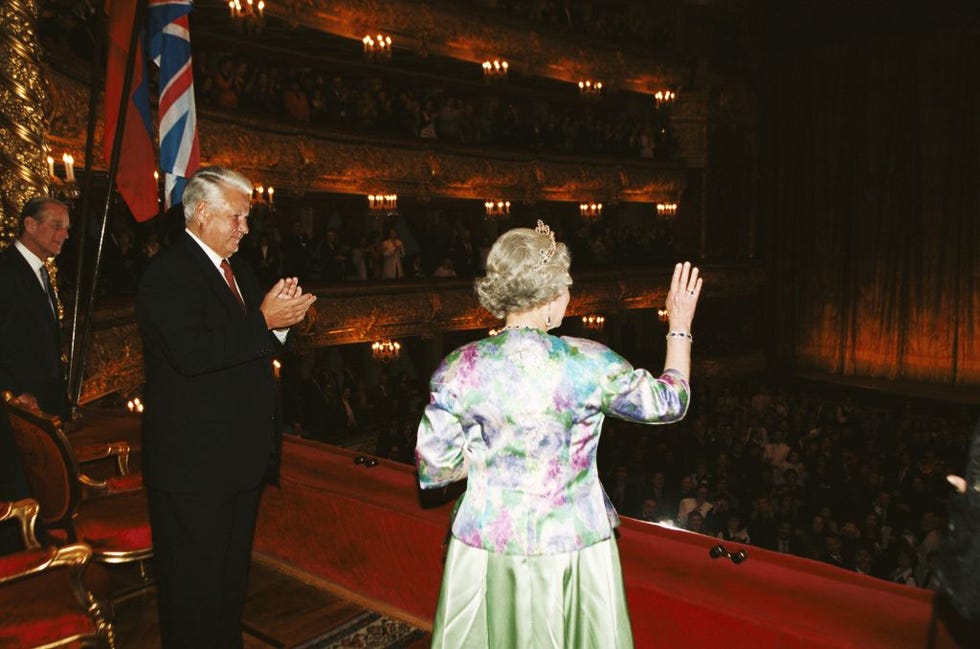
Queen Elizabeth and Prince Philip stayed in the Kremlin as guests of Yletsin.

Here, the Queen and Yetsin are pictured at the Bolshoi theatre.
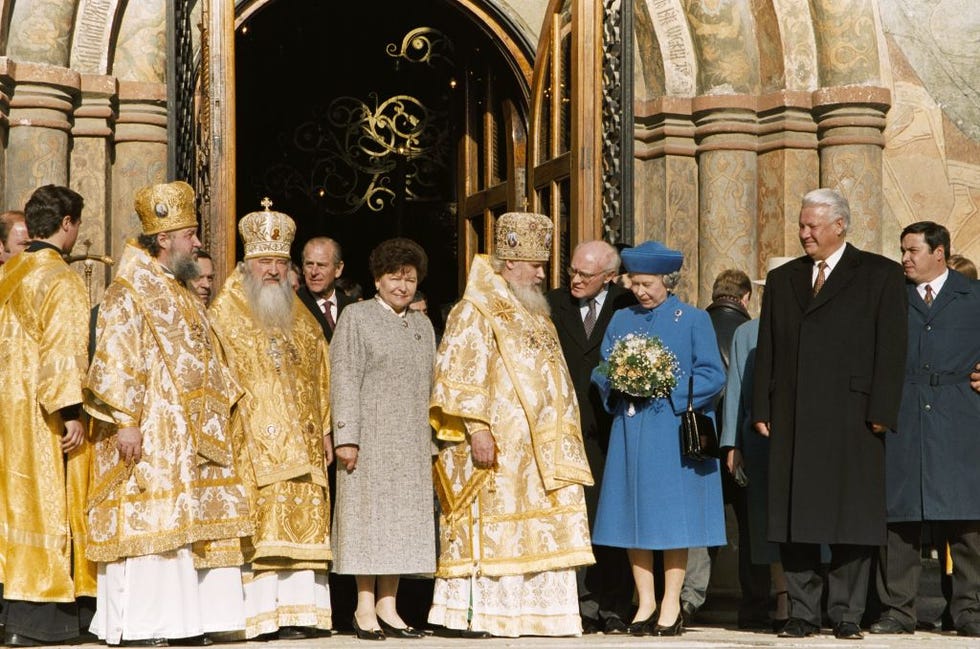
Queen Elizabeth met Patriarch Alexius II and mayor of Moscow Yury Luzhkov; they are pictured here outside Saint Basil's Cathedral.
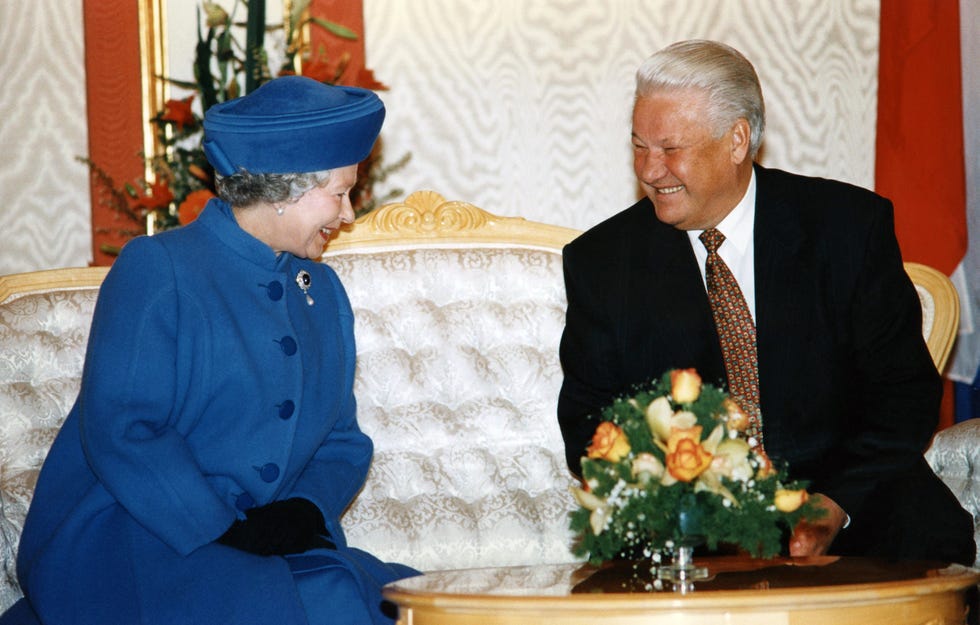
"For Russia, this visit is the utmost recognition that our country is on the road to democracy," Yeltsin told reporters of the Queen's visit.
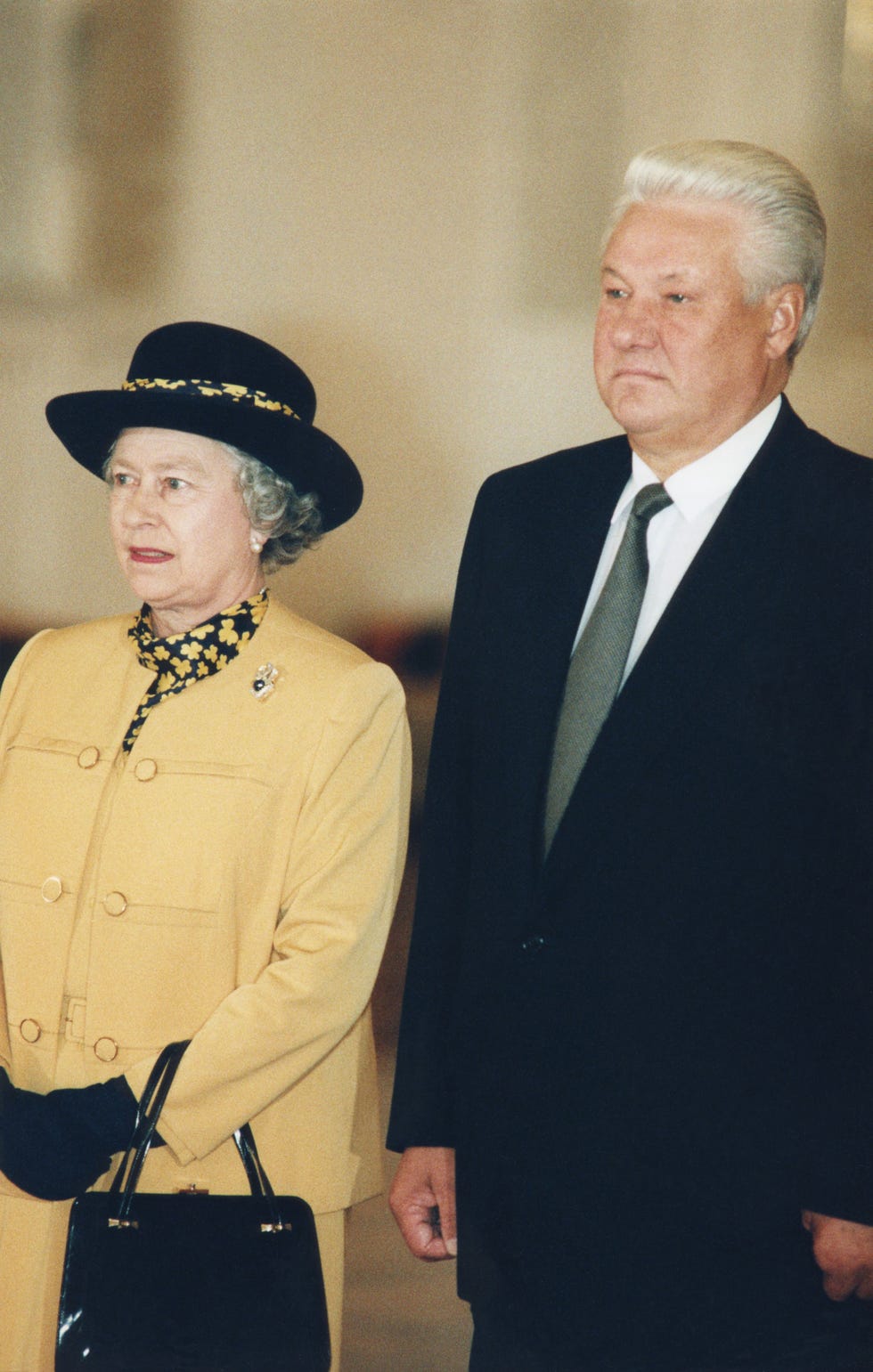
As The Crown shows, the murder of Tsar Nicholas II and his family was a reason why the Queen had yet to visit Russia. Her grandfather, King George V, was Nicholas's first cousin.
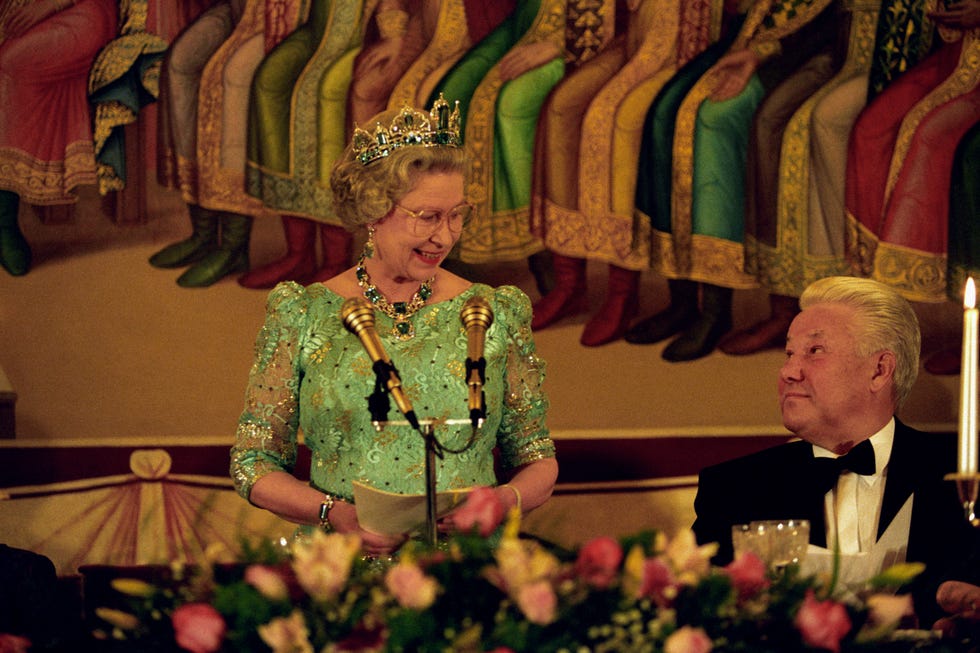
"You and I have spent most of our lives believing that this evening could never happen. I hope that you are as delighted as I am to be proved wrong," Queen Elizabeth said to Yeltsin at a state banquet.
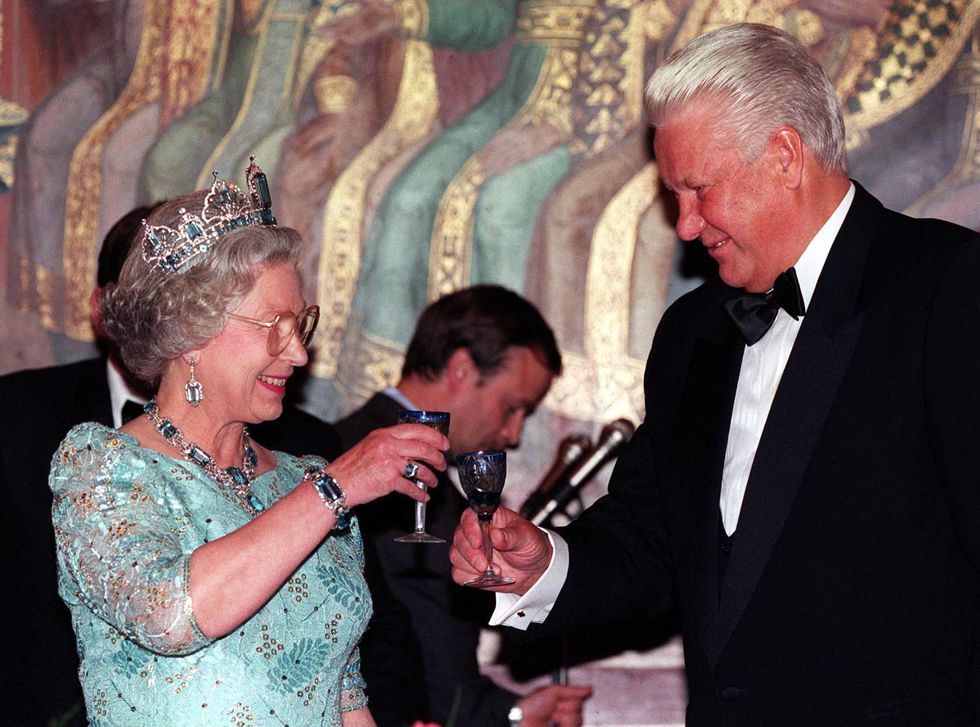
The two toasted at the banquet.
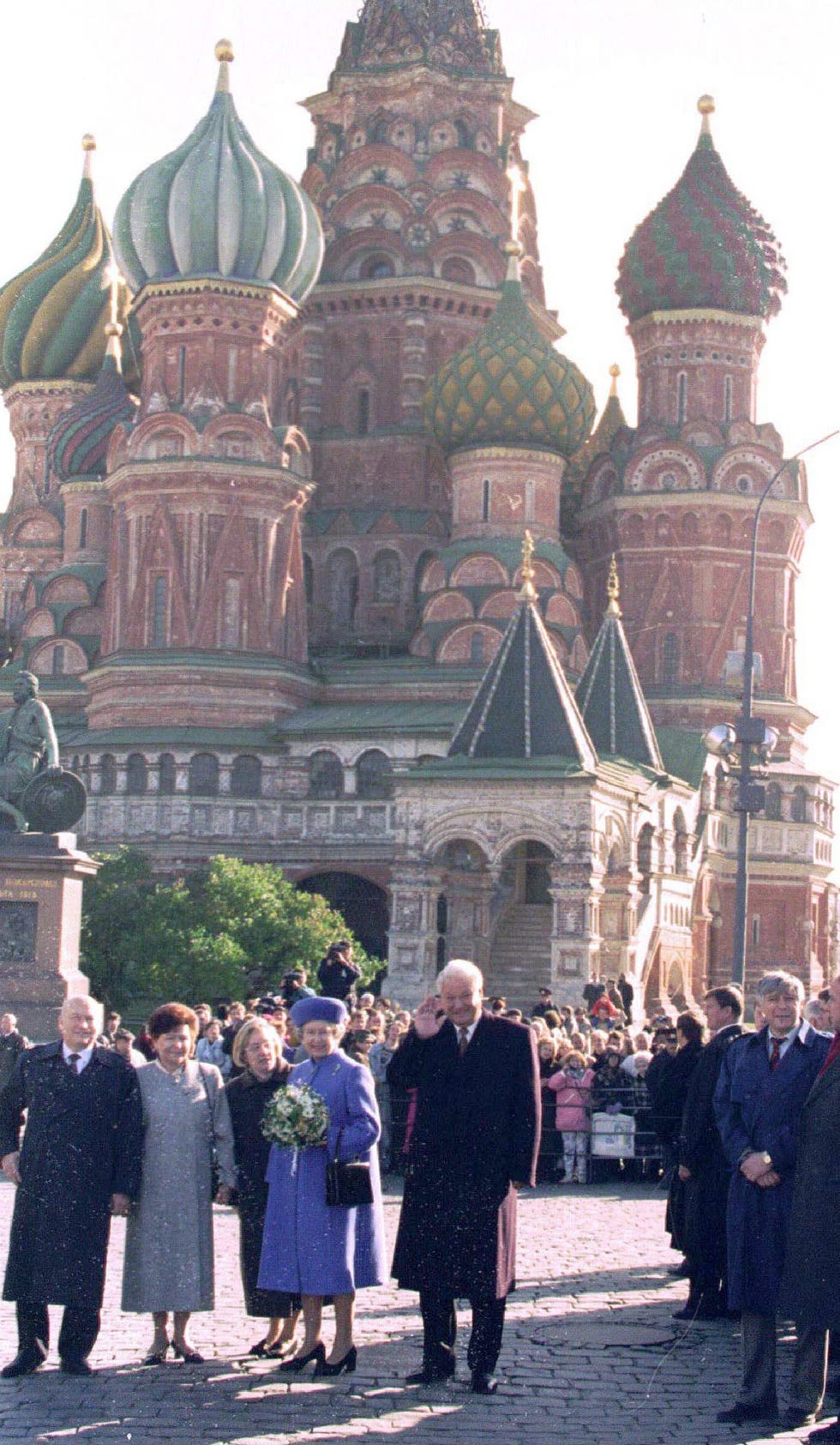
Queen Elizabeth toured Moscow during her four day trip, including visiting the famous Red Square.
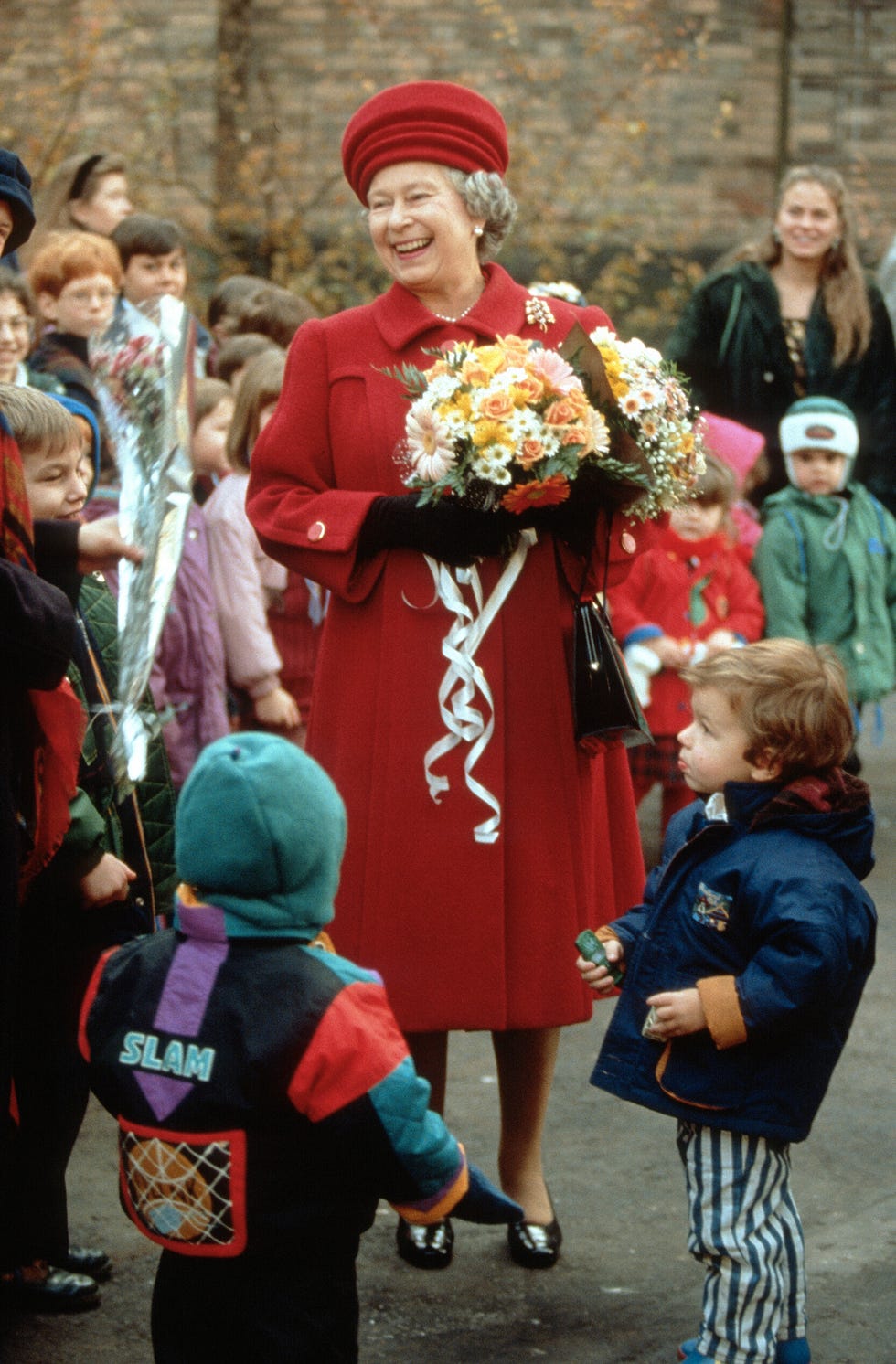
She also met Russian children.
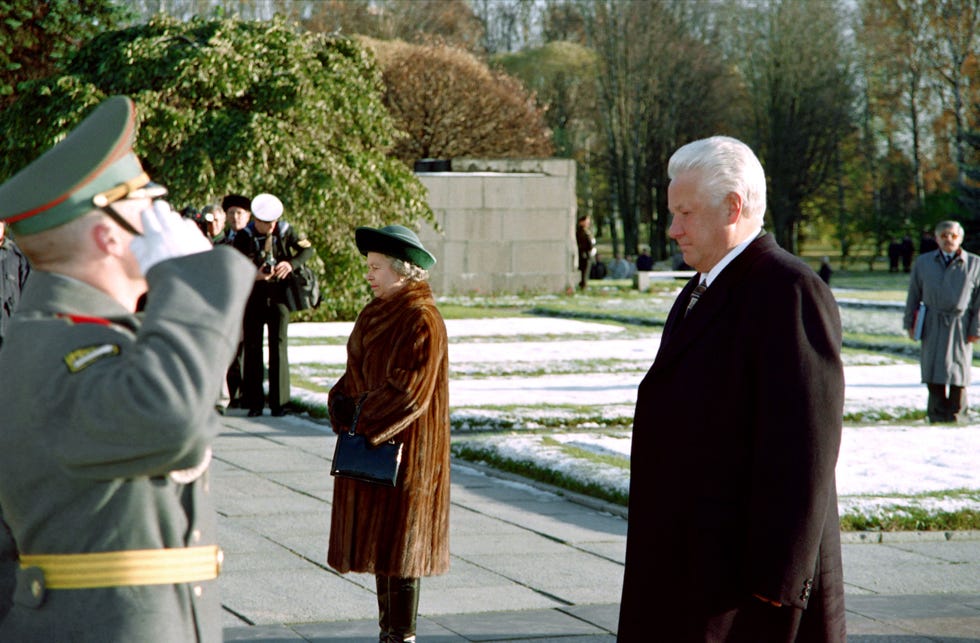
There were more formal events during the trip, too; Queen Elizabeth and Yeltsin attended a ceremony at the Piskarevskoye cemetery, a WWII memorial in St. Petersburg.
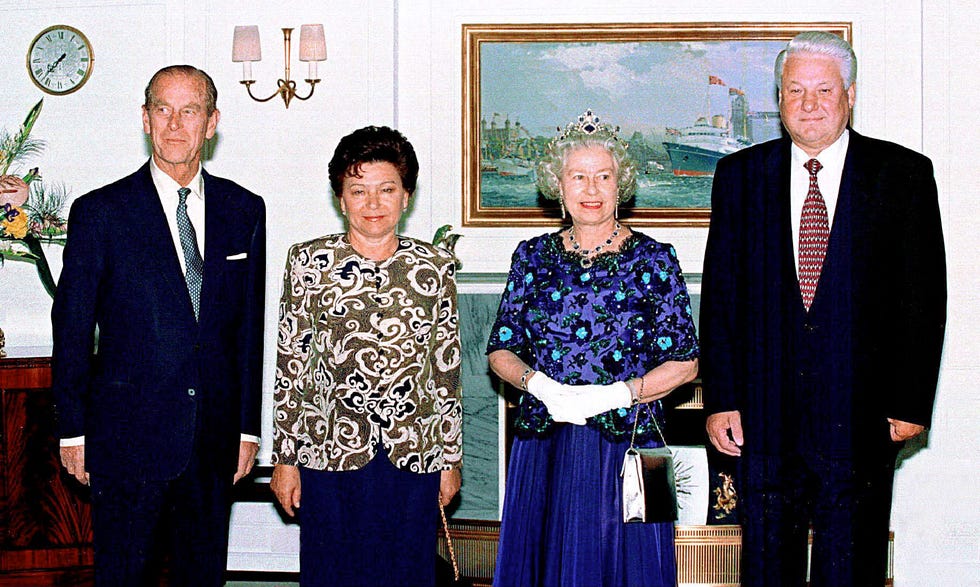
During the trip, Prince Philip and the Queen hosted the Yeltsins on board the Royal Yacht Britannia for a banquet.
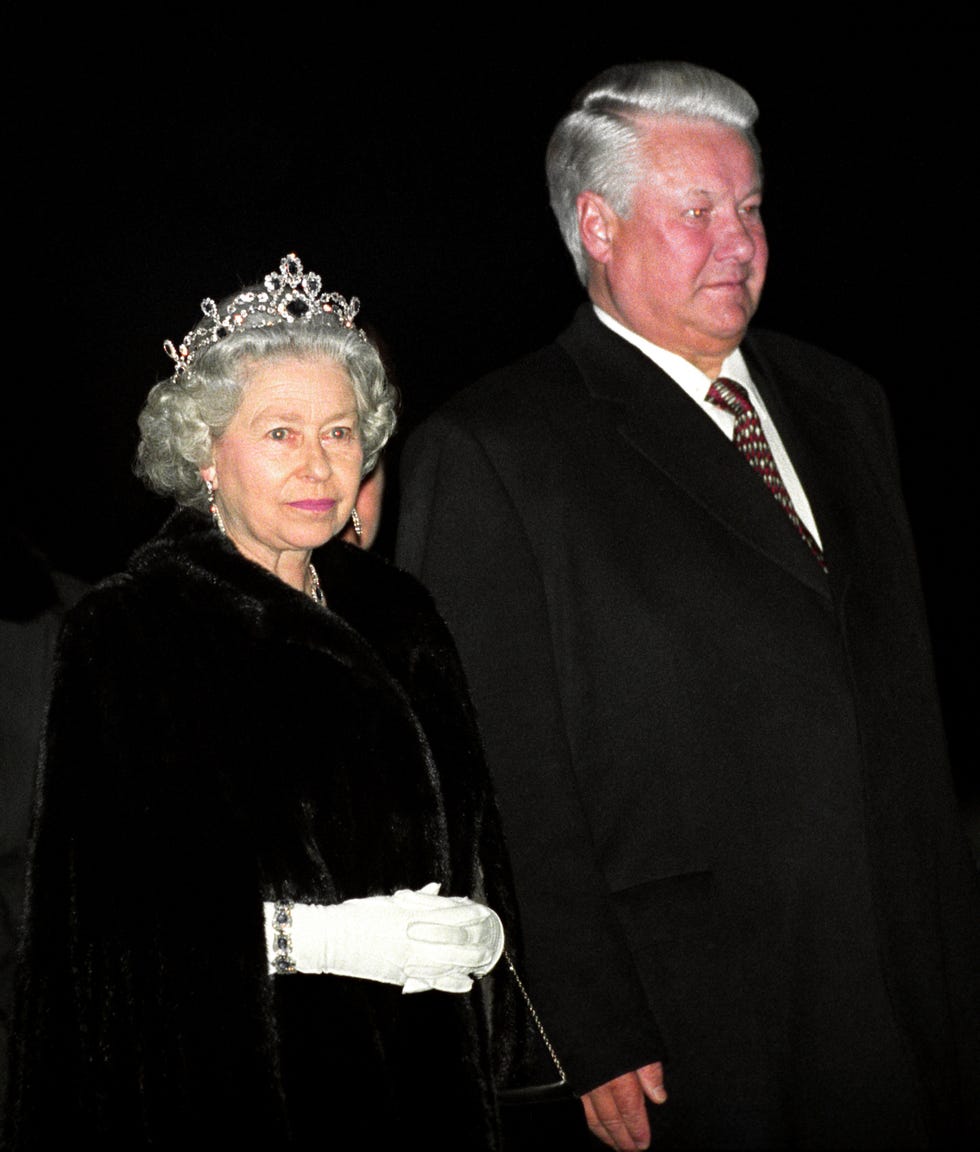
During her Christmas address two months later, Queen Elizabeth reflected, "I never thought it would be possible in my lifetime to join with the Patriarch of Moscow and his congregation in a service in that wonderful cathedral in the heart of the Moscow Kremlin."
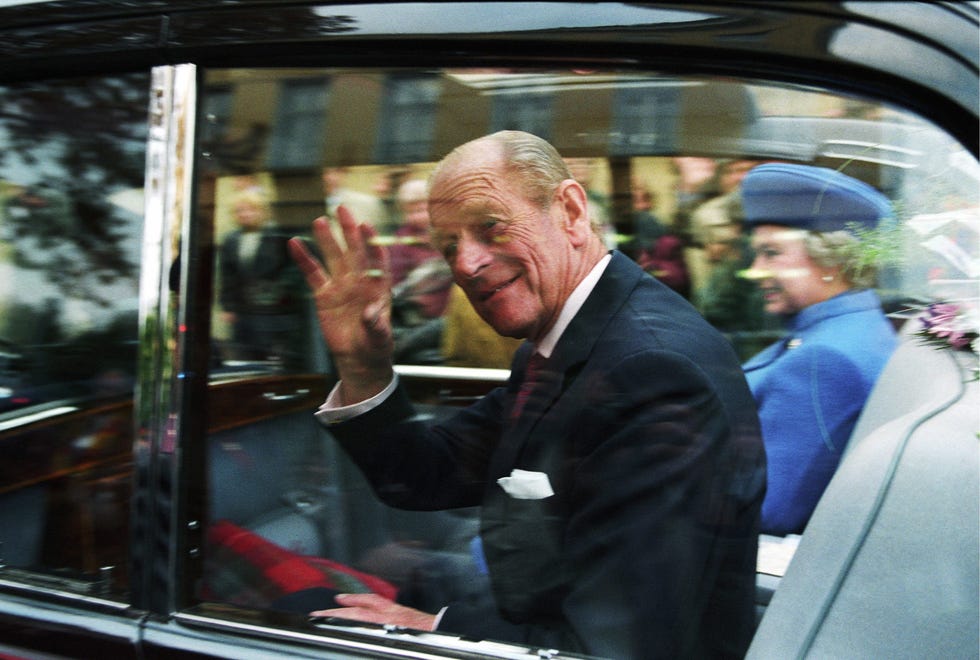
Queen Elizabeth would not return to Russia; Prince Philip returned once more, in 1995, as president of the World Wildlife Fund.
Emily Burack (she/her) is the Senior News Editor for Town & Country, where she covers entertainment, culture, the royals, and a range of other subjects. Before joining T&C, she was the deputy managing editor at Hey Alma , a Jewish culture site. Follow her @emburack on Twitter and Instagram .
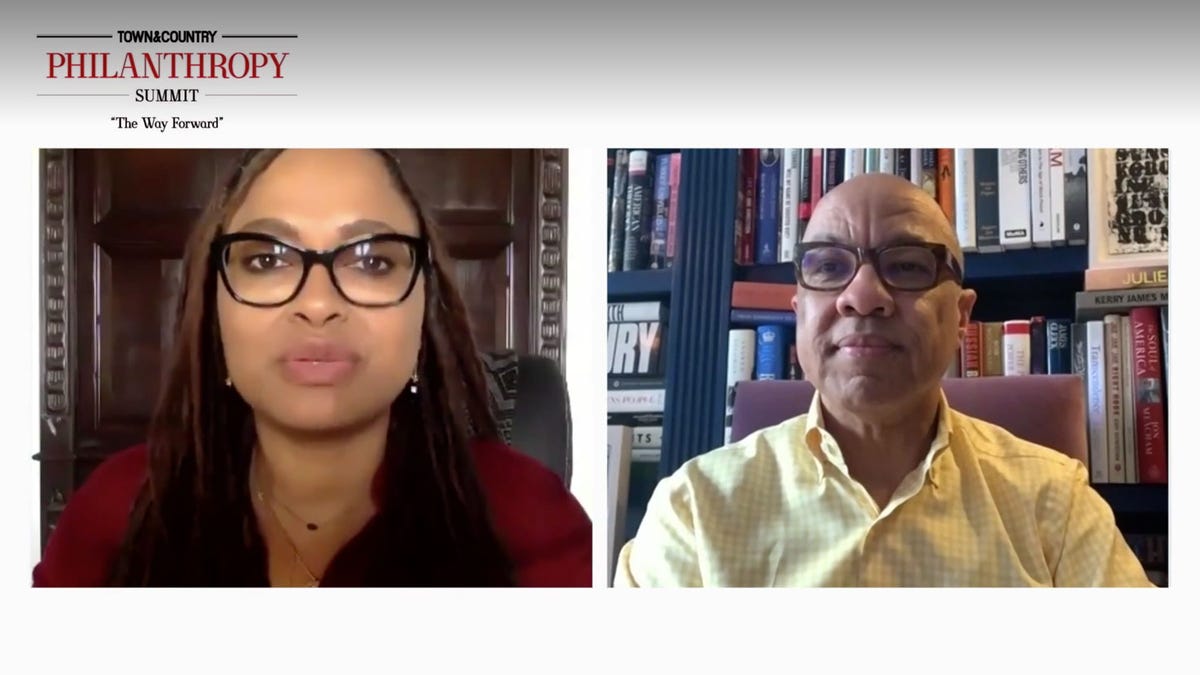
@media(min-width: 40.625rem){.css-1jdielu:before{margin:0.625rem 0.625rem 0;width:3.5rem;-webkit-filter:invert(17%) sepia(72%) saturate(710%) hue-rotate(181deg) brightness(97%) contrast(97%);filter:invert(17%) sepia(72%) saturate(710%) hue-rotate(181deg) brightness(97%) contrast(97%);height:1.5rem;content:'';display:inline-block;-webkit-transform:scale(-1, 1);-moz-transform:scale(-1, 1);-ms-transform:scale(-1, 1);transform:scale(-1, 1);background-repeat:no-repeat;}.loaded .css-1jdielu:before{background-image:url(/_assets/design-tokens/townandcountrymag/static/images/diamond-header-design-element.80fb60e.svg);}}@media(min-width: 64rem){.css-1jdielu:before{margin:0 0.625rem 0.25rem;}} The Crown @media(min-width: 40.625rem){.css-128xfoy:before{margin:0.625rem 0.625rem 0;width:3.5rem;-webkit-filter:invert(17%) sepia(72%) saturate(710%) hue-rotate(181deg) brightness(97%) contrast(97%);filter:invert(17%) sepia(72%) saturate(710%) hue-rotate(181deg) brightness(97%) contrast(97%);height:1.5rem;content:'';display:inline-block;background-repeat:no-repeat;}.loaded .css-128xfoy:before{background-image:url(/_assets/design-tokens/townandcountrymag/static/images/diamond-header-design-element.80fb60e.svg);}}@media(min-width: 64rem){.css-128xfoy:before{margin:0 0.625rem 0.25rem;}}
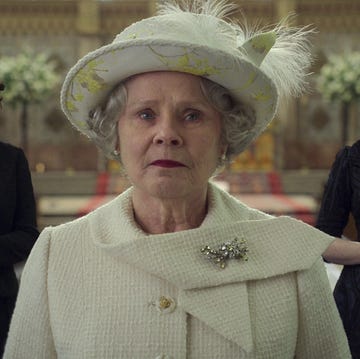
Elizabeth Debicki Wins SAG Award
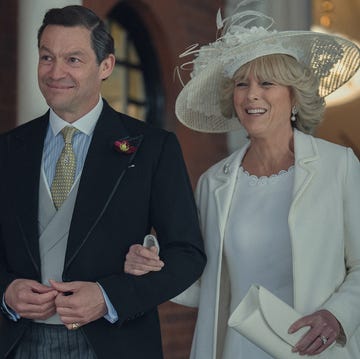
Dominic West Stayed in Bed After 'The Crown'
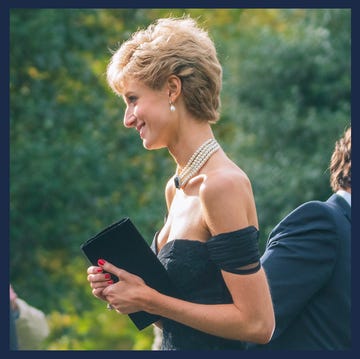
The Crown's Costumes, Props, and More at Auction

Elizabeth Debicki Stuns in Dior

Elizabeth Debicki's Best Red Carpet Looks
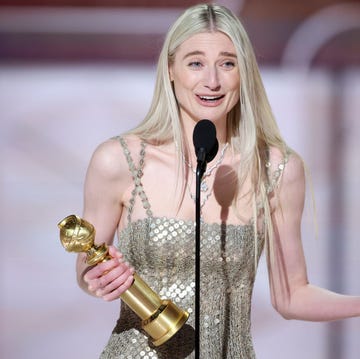
Elizabeth Debicki Wins Golden Globe

Jonathan Pryce Apologized to Princess Anne
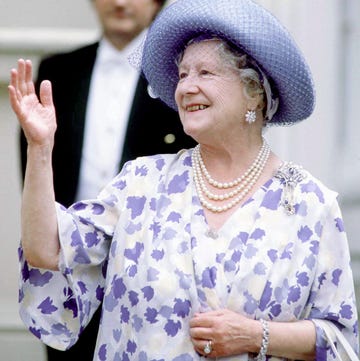
All About The Queen Mother's Pearl Ring
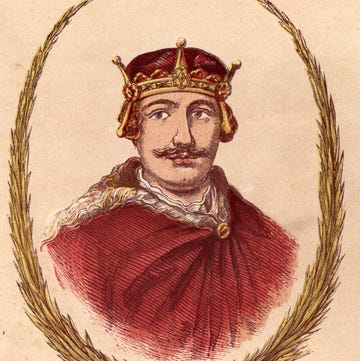
Why Is King William II's Death in 'The Crown'?
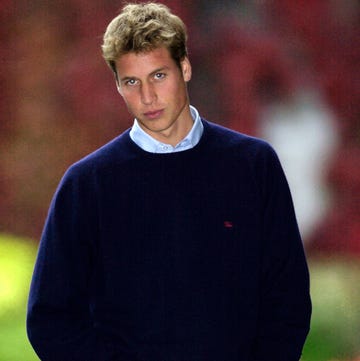
A Look at Prince William's Early 2000s Style

The Queen's Toast at Charles & Camilla's Wedding
WATCH: Queen Elizabeth was the first British monarch to visit Russia
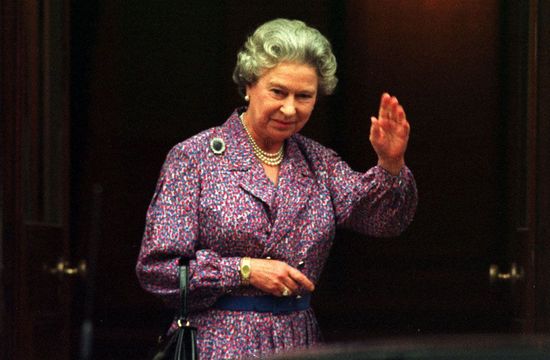
Queen Elizabeth II, photographed in 1993. RollingNews
On Oct 17, 1994, Queen Elizabeth II became the first ruling British monarch to set foot on Russian soil.
As the eyes of the world are on Russia and the invasion of Ukraine, which has caused I migration of refugees unlike anything seen since World War II, we thought it interesting to look back at the October 1994 of Queen Elizabeth II to the Kremlin, by invitation of the then Russian President Boris Yeltsin.
In 1994 the Queen made a three-day visit to Russia. Three years before had seen the dissolution of the Soviet Union, when Yeltsin took office. His hope was that Her Royal Majesty's visit would strengthen the trade relationship with Britain and the Western World.
Yeltsin's spokesman, Vyacheslav Kostikov, said at the time "We realize that the British queen would never have visited a Communist country."
- History of "God Save the King", Britain's National Anthem
Personally, 1994 was also a difficult time for the Queen personally as her son, Prince Charles, had separated from Princess Diana, just two years earlier. A biography of the Prince, by Jonathan Dimbleby, had caused a media frenzy over comments made by Charles with relation to his relationship with his mother and father, Prince Philip.
The Queen and Prince Philip landed in Moscow on Oct 17, 1994. They were then taken to the Kremlin where they were greeted by Yeltsin and his wife, Naina. The Royal pair were also treated to a special performance of the Bolshoi Ballet.
The climax of the tour was a state banquet given on the final evening by the Queen aboard the royal yacht Britannia which had sailed to St. Petersburg to meet the royal party.
They left Russia on Oct 20 and broke the journey home by visiting Finland.
Since 1994 some members of the Royal family have visited Russia, including Princess Anne. She visited in 2016 to mark the 75th anniversary of the first Arctic convoys from the United Kingdom during World War II. Prince Charles also Russia in 2003. This visit resulted in a return invitation to President Vladimir Putin to visit Britain later that year.
Check out some AP footage of the Queen having dinner at the Kremlin:
Related: Queen Elizabeth II
BHT newsletter
You may also like.
- Most Recent
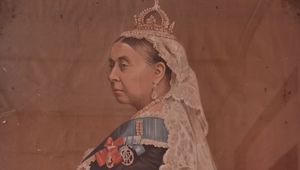
Is this the last-known footage o...
On this day in 1819, Queen Victoria was born. This footage of Queen...

The spiritual claims and legends...
Have more spiritual claims and legends attached to Glastonbury than...
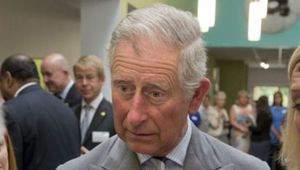
The strict rules King Charles ma...
King Charles is quite particular with his tea...
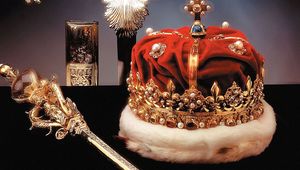
Scottish Crown Jewels' history i...
The Scots have placed their affections in some strange places throu...

Full English, a guide to a prope...
Breakfast: It's Britain's answer to soul food. The art of the prope...

The day the British entered Berlin
Have you seen this footage of British troops marching into Berlin?
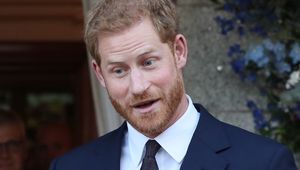
Is Harry, the Duke of Sussex, st...
The Royal Family removed Prince Harry’s “Royal Highness” title, thr...
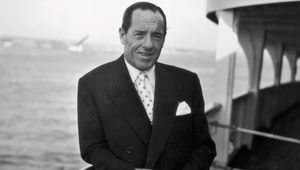
The London gangster who shaped t...
London gangster William 'Billy' Hill helped shape the criminal care...
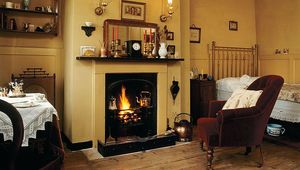
The philanthropic legacy of Brit...
Almshouses across Britain have sheltered elderly and poor parishion...
Breaking News
Queen Elizabeth Makes Historic Visit to Russia
- Show more sharing options
- Copy Link URL Copied!
Queen Elizabeth II, leaving behind the latest Royal Family flap, came to the Kremlin on Monday on the first visit to Russia by a British monarch.
A new authorized biography of her son and heir, Prince Charles, threatened to overshadow the visit by the queen and her husband, Prince Philip. In the book, Charles accuses Philip of forcing him into a loveless marriage.
Russian President Boris N. Yeltsin’s chief spokesman, Vyacheslav V. Kostikov, said the queen’s visit is evidence of Russia’s break with its totalitarian past.
“We realize that the British queen would never have visited a Communist country,” Kostikov said.
Both the queen and Prince Philip are related to the imperial Romanov family of Czar Nicholas II, executed by Bolshevik revolutionaries in 1918. The queen’s grandfather, King George V, the czar’s first cousin, refused to give Nicholas II asylum a year earlier.
The 68-year-old queen, wearing a fur coat and pillbox hat, was greeted at Moscow’s Vnukovo-2 airport by First Deputy Prime Minister Oleg N. Soskovets. A beaming Yeltsin and his wife, Naina, gave the royal couple a formal welcome at the ornate St. George’s Hall in the Kremlin.
The royal couple are staying in the Kremlin as Yeltsin’s guests. They attended a performance of “Giselle” at the Bolshoi Ballet on Monday evening, sitting in the “czar’s box” under the coat of arms of the former Soviet Union.
Back in Britain, newspapers were full of speculation about excerpts from the biography of Charles.
Charles recalls how, as a boy, his mother paid him little attention and his father belittled him to the point of tears. As an adult, Charles suggests that Philip pressured him into marrying Princess Diana, whom he says he never loved.
More to Read

More student loan forgiveness available, but April 30 deadline looms
April 29, 2024
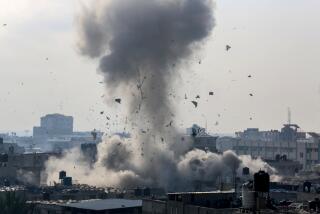
Qatar’s mediation efforts in Israel-Hamas war come under fire
April 30, 2024
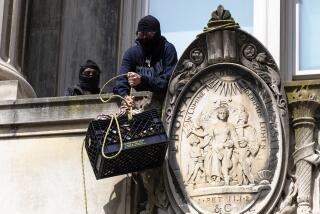
Police clear pro-Palestinian protesters from Columbia’s Hamilton Hall after occupation
Start your day right
Sign up for Essential California for news, features and recommendations from the L.A. Times and beyond in your inbox six days a week.
You may occasionally receive promotional content from the Los Angeles Times.
More From the Los Angeles Times
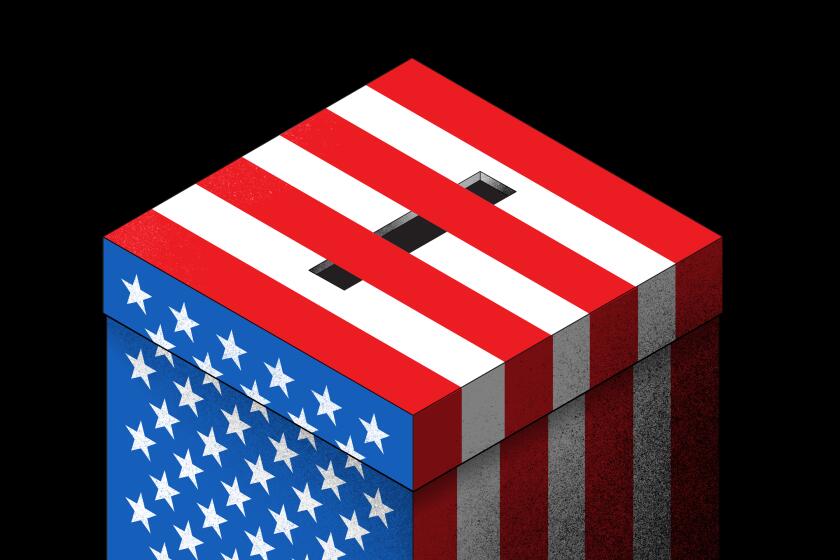
Inside the far-right plan to use civil rights law to disrupt the 2024 election

This artist sued to remove homeless people. They also have been his friends and inspiration
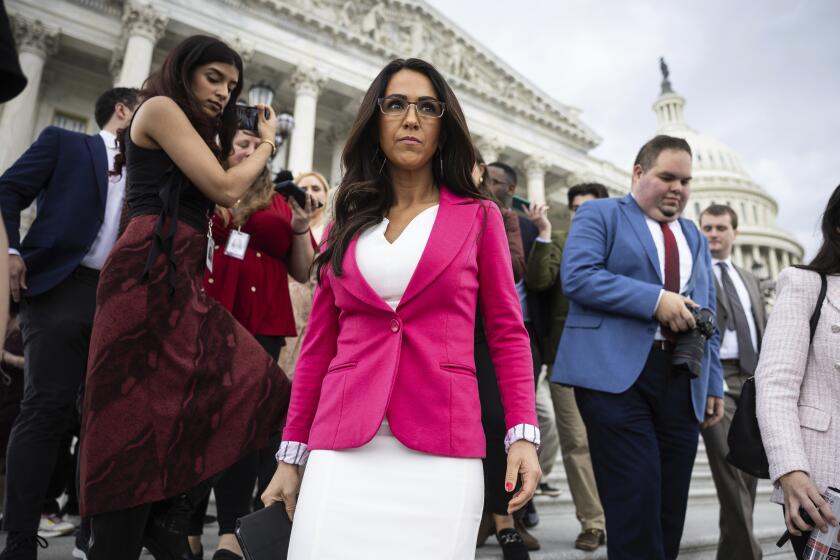
Lauren Boebert is her own best asset — and worst enemy — as she fights to stay in Congress
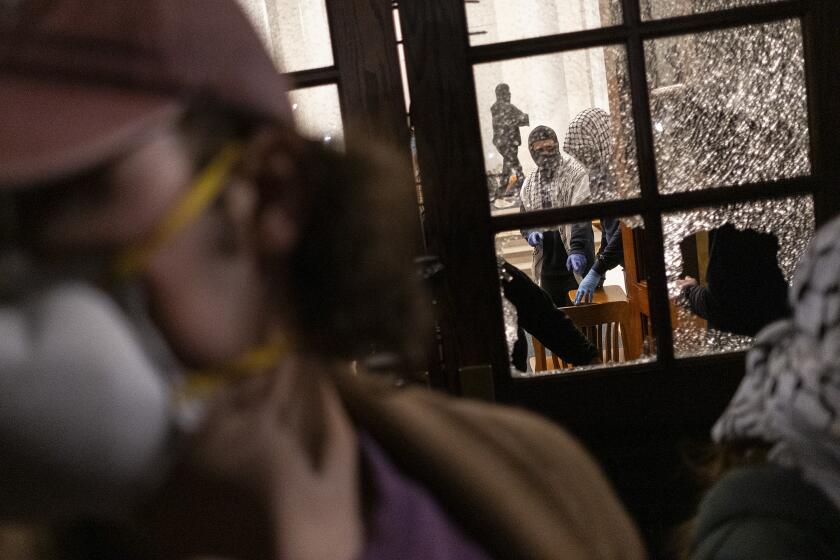
Trump likens Columbia protests to Jan. 6, part of effort to downplay Capitol attack
clock This article was published more than 29 years ago
ELIZABETH II VISITS RUSSIA ON WAVE OF ROYAL GOSSIP
MOSCOW, OCT. 17 -- Britain's Queen Elizabeth II arrived in Russia today for a visit that draws a symbolic close to seven decades of royal frostiness toward Russia over the assassination of Czar Nicholas II, the queen's distant cousin, whose execution with his family by Bolshevik revolutionaries in 1918 ended the monarchy here.
The royal visit, which British officials consider one of the queen's most important foreign trips, was overshadowed before it began by a furor in England over a new biography of Prince Charles, the queen's son and heir.
Aides traveling with the queen spent much of today playing down the controversy caused by the book, in which Charles says he never loved his wife and suffered from a lack of affection and a domineering father.
Russians, however, seemed less interested in the newest palace dust-up than in the glamor of having royalty here again. Newspaper and television coverage of the first visit by a British monarch began several days ago and continued at a fast pace today, with particular focus on the glitter and the generally warm feelings most Britons have toward the queen.
Russia is in the midst of a mini-monarchist boom, with some polls showing that as many as 18 percent of Russians favor a return to monarchy. A monarchist party was established recently, and a teenage descendant of Nicholas II who lives in Europe and is said to be an heir to the Romanov throne has been treated with growing respect here, even in official circles.
Whether Elizabeth will say anything publicly during about the last czar is unclear, but she will visit the church in St. Petersburg where czars are buried. This spring, the bones of Nicholas II, recently uncovered from a pit near Yekaterinburg where his Bolshevik killers tossed them in 1918, are to be interred there as well.
Elizabeth's grandfather, King George V, and Nicholas were first cousins and looked like identical twins. Although the two monarchs were friendly, the British government refused Nicholas political asylum after he was overthrown in 1917, apparently because George feared a surge of anti-monarchist sentiment in England. Nicholas and his family were shot several months later.
Lingering hostility over the fate of Nicholas had prevented a royal trip until now, despite an invitation by the last Soviet leader, Mikhail Gorbachev. But the dramatic political and economic changes of the past few years apparently changed minds in London, and Buckingham Palace responded positively to an invitation by President Boris Yeltsin, who ended communist rule here in 1991. Other members of the royal family have already visited Russia -- including Charles and Prince Philip, the queen's consort and Charles's father.
Today, Yeltsin told reporters: "For Russia, this visit is the utmost recognition that our country is on the road to democracy."
In an interview published today in the Daily Telegraph newspaper, Prince Philip -- whose own kinship to the last czar devolves through Greek royalty -- said the grisly death of the Romanovs was part of his family history. "But I don't look at this as a family occasion," he said. "We went through this whole drama of the collapse of the Marxist state, and now we see the gradual recombining of countries... . There is tremendous potential."
British officials said the queen's four-day visit is not intended to focus on old wounds but is designed to acquaint the 68-year-old queen with today's Russia. Her schedule here and in St. Petersburg is full of ceremonial events at the Kremlin, where she and Prince Philip are staying; cultural forays around town; and meetings with Russians of all stripes.

The Queen’s 10 most memorable royal trips abroad
By Hope Coke
While most of us associate travel abroad with holidays, things were rather different for the Queen, who spent much of her lengthy reign traversing the globe in her capacity as monarch. From State visits to Commonwealth tours, she was a master (or mistress) of diplomacy, meeting a slew of high-profile world leaders (from the esteemed to the controversial), and visiting historic destinations – often in the company of her late, beloved husband, the Duke of Edinburgh. Find out more about some of her most intriguing international visits below.

Commonwealth Tour: 1953-1954 When the Queen acceded the throne following the death of her father, King George VI, in 1952, she began her reign with a monumental tour of the Commonwealth of Nations – of which she had just become head. The longest Commonwealth tour to date, it lasted an impressive six months (from November 1953 to May 1954), and traversed 44,000 miles: taking in the West Indies, Australasia (encompassing Australia, New Zealand and some neighbouring islands), Asia and Africa. It marked a significant moment for the new Queen as she fully embraced her role and the duty that came with it, as her and her husband, Prince Philip, left the young Prince Charles and Princess Anne behind for much of the trip. The family were then reunited in Malta, before they all sailed home together via Gibraltar aboard the Royal Yacht Britannia.

USA: 1957 Although she had visited the USA prior to becoming Queen, October 1957 marked Elizabeth II’s first visit to the country in her capacity as monarch. She was hosted by the 34th US President, Dwight D Eisenhower, for a four-day State trip, during which she visited New York City, Washington DC and Williamsburg in Virginia. Eisenhower had first met Elizabeth when she was a young princess, so the reunion carried particular poignancy for them both.

India: 1961 India had been part of the British Empire within the Queen’s lifetime, with her own parents, King George VI and the Queen Mother (then Queen Consort) having been the last Emperor and Empress of India until the British Raj was dissolved in 1947. Coming in light of England’s problematic imperial history, it marked a new chapter in relations between the two countries when the Queen and Prince Philip made a State visit to India in 1961 – the first trip by a reigning British Monarch since the country gained its independence. The previous visit had taken place some 50 years before, in 1911, when King George V and Queen Mary of Teck were proclaimed Emperor and Empress of India at the Delhi Durbar.

Silver Jubilee Commonwealth Tour: 1977 To mark the significant milestone of 25 years on the throne, the Queen undertook a special Silver Jubilee tour in 1977. The monarch and Prince Philip travelled over 56,000 miles, visiting 14 Commonwealth countries, such as Western Samoa, Australia and New Zealand, as well as making their first ever trip to the island nations of Fiji and Tonga. The Queen is said to have personally wished to undertake such an ambitious tour, in order that she could share in her Jubilee celebrations with as many people as possible.

Germany: 1990 Although the Queen had paid numerous previous visits to West Germany during her reign, her trip in November 1990 marked her first journey to the country since the fall of the Berlin Wall in 1989 – a significant historical moment as the Cold War de-escalated across Eastern Europe. The Queen was hosted by President Richard von Weizsäcker, and was greeted by some 600 children waving Union Jack flags as she visited the Laarbruch RAF base for an inspection. Making a rare trip alone, rather than in the company of the Duke of Edinburgh, the monarch then went to have tea with Von Weizsäcker at his Hammerschmidt Villa in the German city of Bonn.

Russia: 1994 Another historic event was the Queen’s visit to Russia in October 1994, constituting her first trip to the country. Hosted by Boris Yeltsin, the first president of Russia following the dissolution of the Soviet Union, a spokesman for Yeltsin commented on the significance of the moment, stating, ‘We realise that the British queen would never have visited a Communist country’. The Queen was joined by her husband, Prince Philip, first visiting Moscow (where they stayed at the Kremlin as Yeltsin’s guests), before going on to St Petersburg.

South Africa: 1995 The Queen visited South Africa as a young princess with her parents and sister, King George VI, his Queen Consort (later the Queen Mother) and Princess Margaret, and turned 21 during the tour. In a speech broadcast from Cape Town on her birthday, the future Queen pledged her commitment to the Commonwealth, promising that her ‘whole life… shall be devoted to your service’. Yet the dawn of Apartheid in 1948 meant the Royal Family did not visit the country for a number of years (despite the Queen technically being its monarch until 1961). So it was an important moment when the Queen and the Duke of Edinburgh travelled to South Africa aboard the Royal Yacht Britannia in March 1995, coming as a gesture of support to its new government after the end of Apartheid, when they were hosted by new President Nelson Mandela.

Golden Jubilee Commonwealth Tour: 2002 To mark the 50th anniversary of her accession to the throne, the Queen undertook a special Golden Jubilee Tour to visit four Commonwealth countries – Jamaica, New Zealand, Australia and Canada – kicking off in February 2002. Festivities were somewhat subdued, however, in light of the sad death of the Queen’s younger sister, Princess Margaret, earlier that month. Yet there were some memorable moments during the trip nonetheless, such as a power cut during a banquet on the final night of the Queen and Philip’s stay in Jamaica.

By Isaac Bickerstaff

Canada: 2010 Elizabeth II was technically the Queen of Canada, albeit as a constitutional monarch with a largely symbolic function, represented by Governor Generals and Lieutenant Governors within the country. It’s perhaps unsurprising, therefore, that she has visited Canada more than any other country: an impressive 27 times during her reign. The most recent trip was in the sumer of 2010, when the monarch and the late Prince Philip were hosted by the 27th Governor General of Canada, Michaëlle Jean. The couple’s visit coincided with Canada Day on 1 July, which they celebrated on Parliament Hill in Ontario. There, the monarch gave a speech to a crowd of some 100,000 revelers, wishing them ‘all the very happiest Canada Day.’

Malta: 2015 The Queen had not been abroad for some seven years prior to her death. Her most recent international trip, however, was to Malta, for the 24th Commonwealth Heads of Government Meeting in November. Despite the official nature of the visit, during which she attended a summit with the theme of ‘The Commonwealth – Adding Global Value’, Malta also carries particular sentimental significance for both the Queen and her late husband, Prince Philip, who accompanied her on the trip. The royal couple lived in the country from 1949 to 1951, while Philip was stationed there as a naval officer before his wife became Queen. It is said to have been an extremely happy time for the young couple, adding particular poignancy to the fact that their 2015 visit was their last trip abroad together.

By Isaac Zamet

By Alessia Armenise
- Search Please fill out this field.
- Manage Your Subscription
- Give a Gift Subscription
- Newsletters
- Sweepstakes
Imelda Staunton Recreates Queen Elizabeth's 1994 Visit to Russia While Filming 'The Crown'
The fifth season of The Crown will focus on 1990 to 1997, including the Queen's "annus horribilis"
Stephanie Petit is a Royals Editor, Writer and Reporter at PEOPLE.
:max_bytes(150000):strip_icc():format(webp)/Stephanie-13-258c05f276a7429a88ccccf5dd0c2103.jpg)
Imelda Staunton is recreating Queen Elizabeth 's state visit to Russia in the latest scenes from The Crown .
The upcoming season Netflix's hit drama will include the monarch's 1994 visit to Russia. In photos from the set, Staunton sports a yellow dress topped by a fur coat and accessorized with gloves, her signature handbag and a coordinating hat, recreating the ensemble worn by the Queen as she inspected Russian service personnel at Vnukovo Airport in Moscow.
The Queen's three-day visit in October 1994 marked the first time a ruling British monarch had visited Russia — and it remains her only visit to the country. She was accompanied by her husband, Prince Philip , on the trip. The Duke of Edinburgh, who died last year at age 99, will be portrayed in season 5 and 6 of The Crown by Jonathan Pryce , as the Netflix drama switched out their cast as the characters age.
Shooting the scenes is of particular significance given Russia's ongoing invasion of Ukraine.
Ukraine's President Volodymyr Zelenskyy thanked Britain's royal family for voicing their support for the country on March 1.
Zelenskyy tweeted that he and his wife, Olena, "are grateful to the Duke and Duchess of Cambridge @RoyalFamily that at this crucial time, when Ukraine is courageously opposing Russia's invasion, they stand by our country and support our brave citizens."
"Good will triumph," he added.
Queen Elizabeth , 95, also made a "generous donation" last week to the Disasters Emergency Committee's Ukraine Humanitarian Appeal.
The fifth season of The Crown will reportedly focus on 1990 to 1997 and feature a new cast, including Dominic West playing Prince Charles and Elizabeth Debicki as Princess Diana.
The storyline may focus in part on 1992, which the Queen declared to be an "annus horribilis" (Latin for "horrible year"). It was the year in which three of her four children were separated from their spouses and a devastating fire hit Windsor Castle.
Though season 5 was initially intended to be the series' curtain call, creators changed their minds and, to fans' great relief, promised that the historical drama will continue to rule Netflix queues for a final, sixth season.
Can't get enough of PEOPLE 's Royals coverage? Sign up for our free Royals newsletter to get the latest updates on Kate Middleton , Meghan Markle and more!
"As we started to discuss the storylines for Series 5, it soon became clear that in order to do justice to the richness and complexity of the story we should go back to the original plan and do six seasons," creator Peter Morgan said in July 2020. "To be clear, Series 6 will not bring us any closer to present-day — it will simply enable us to cover the same period in greater detail."

Related Articles
Awesome, you're subscribed!
Thanks for subscribing! Look out for your first newsletter in your inbox soon!
The best things in life are free.
Sign up for our email to enjoy your city without spending a thing (as well as some options when you’re feeling flush).
Déjà vu! We already have this email. Try another?
By entering your email address you agree to our Terms of Use and Privacy Policy and consent to receive emails from Time Out about news, events, offers and partner promotions.
- Things to Do
- Food & Drink
- Arts & Culture
- Time Out Market
- Coca-Cola Foodmarks
- Los Angeles
Get us in your inbox
🙌 Awesome, you're subscribed!

Here’s every country Queen Elizabeth II visited in her 70-year reign
From Algeria to Zimbabwe, the Queen visited at least 117 different countries

Queen Elizabeth II, who died earlier today , was probably the best-travelled monarch in history. In her 70 years as UK monarch, Her Maj apparently travelled to at least 117 different countries – and covered over a million miles, according to The Telegraph .
The Queen travelled for loads of reasons, from ceremonial openings to official state visits, but she got around so much primarily because she was head of state for the Commonwealth: a political association of countries that were largely conquered by Britain back when it was an imperial power. RECOMMENDED: How the world is paying tribute to Queen Elizabeth II
In fact, Elizabeth II wasn’t just the Queen of the United Kingdom: during her time on the throne, she reigned over a total of 32 sovereign countries. Having started her reign in the final years of the British Empire, she ruled over a number of former British colonies as they became independent sovereign states. Many, but not all, later cut ties with the monarchy and became republics.
Queen Elizabeth II reigned, at various points, over Antigua and Barbuda, Australia, the Bahamas, Barbados, Belize, Canada, Ceylon (later Sri Lanka), Fiji, Gambia, Ghana, Grenada, Guyana, Jamaica, Kenya, Malawi, Malta, Mauritius, New Zealand, Nigeria, Pakistan, Papua New Guinea, Saint Kitts and Nevis, Saint Lucia, St Vincent and the Grenadines, Sierra Leone, the Solomon Islands, South Africa, Tanganyika (later Tanzania), Trinidad and Tobago, Tuvalu, Uganda and, of course, the UK . She was also proclaimed as queen by Rhodesia, the predecessor to Zimbabwe.
By the time of her death, she was still the queen of 15 countries: Antigua and Barbuda, Australia, the Bahamas, Belize, Canada, Grenada, Jamaica, New Zealand, Papua New Guinea, Saint Kitts and Nevis, Saint Lucia, Saint Vincent and the Grenadines, the Solomon Islands, Tuvalu and the UK. She was the Queen of Barbados until November 2021, when the Caribbean nation became a republic.
As you’d expect, the Queen visited all of these places – and plenty more – during her 70-year reign. Here is a full list of all the countries and states the Queen travelled to during her reign, and the dates when she visited.
Algeria (1980)
Antigua and Barbuda (1966, 1977, 1985)
Australia (1953, 1963, 1970, 1973, 1974, 1977, 1980, 1981, 1982, 1986, 1988, 1992, 2000, 2002, 2011)
Austria (1969)
Bahamas (1966, 1977, 1985, 1994)
Bahrain (1979)
Bangladesh (1983)
Barbados (1966, 1977, 1985, 1989)
Belgium (1966, 1993, 1998, 2007)
Belize (1985, 1994)
Bermuda (1953, 1975, 1983, 1994, 2009)
Botswana (1979)
Brazil (1968)
British Virgin Islands (1966, 1977)
Brunei (1998)
Canada (1957, 1959, 1963, 1966, 1967, 1970, 1971, 1973, 1974, 1976, 1977, 1978, 1982, 1983, 1987, 1990, 1992, 1994, 1997, 2002, 2005, 2010)
Cayman Islands (1983, 1994)
Chile (1968)
China (1986)
Cook Islands (1974)
Cyprus (1961, 1983, 1984, 1993)
Czech Republic (1996)
Denmark (1957, 1979)
Dominica (1966, 1985, 1994)
Estonia (2006)
Ethiopia (1965)
Fiji (1953, 1963, 1970, 1973, 1977, 1982)
Finland (1976, 1994)
France (1957, 1972, 1992, 1994, 2004, 2014)
Gambia (1961)
Germany (1990, 1992, 2004, 2015)
Ghana (1961, 1999)
Grenada (1966, 1985)
Guyana (1966, 1994)
Hungary (1993)
Iceland (1990)
India (1961, 1983, 1997)
Indonesia (1974)
Iran (1961)
Ireland (2011)
Italy (1961, 1980, 2000, 2014)
Jamaica (1953, 1966, 1975, 1983, 1994, 2002)
Japan (1975)
Jordan (1984)
Kenya (1952, 1972, 1983, 1991)
Kiribati (1982)
Kuwait (1979)
Latvia (2006)
Liberia (1961)
Libya (1954)
Lithuania (2006)
Luxembourg (1976)
Malawi (1979)
Malaysia (1972, 1989, 1998)
Maldives (1972)
Malta (1954, 1967, 1992, 2005, 2015)
Mauritius (1972)
Mexico (1975, 1983)
Morocco (1980)
Mozambique (1999)
Namibia (1991)
Nauru (1982)
Nepal (1961, 1986)
Netherlands (1958, 1988, 2007)
New Zealand (1953, 1963, 1970, 1974, 1977, 1981, 1986, 1990, 1995, 2002)
Nigeria (1956, 2003)
Norway (1955, 1981, 2001)
Oman (1979, 2010)
Pakistan (1961, 1997)
Panama (1953)
Papua New Guinea (1974, 1977, 1982)
Poland (1996)
Portugal (1957, 1985)
Qatar (1979)
Russia (1994)
Saint Kitts and Nevis (1985)
Saint Lucia (1966, 1985)
Saint Vincent and the Grenadines (1966, 1985)
Samoa (1977)
Saudi Arabia (1979)
Seychelles (1972)
Sierra Leone (1961)
Singapore (1972, 1989)
Solomon Islands (1982)
South Africa (1995, 1999)
South Korea (1999)
Slovakia (2008)
Slovenia (2008)
Spain (1988)
Sri Lanka (1954, 1981)
Sudan (1965)
Sweden (1956, 1983)
Switzerland (1980)
Tanzania (1979)
Thailand (1972, 1996)
Tonga (1953, 1970, 1977)
Trinidad & Tobago (1966, 1985, 2009)
Tunisia (1980)
Turkey (1971, 2008)
Turks and Caicos Islands (1966)
Tuvalu (1982)
Uganda (1954, 2007)
UAE (1979, 2010)
USA (1957, 1976, 1983, 1991, 2007)
Vatican City (1961, 1980, 2000, 2014)
West Germany (1965, 1978, 1987)
Yugoslavia (1972)
Zambia (1979)
Zimbabwe (1991)
What will happen now that the Queen has died?
Will there be a UK bank holiday to mark the death of the Queen?
Everything you need to know about the Queen’s funeral
A military procession for the Queen is planned next week in London
Unusual things that will happen in London after the Queen’s death
- Ed Cunningham News Editor, Time Out UK and Time Out London
Share the story
An email you’ll actually love
More on the Queen
Discover Time Out original video
- Press office
- Investor relations
- Work for Time Out
- Editorial guidelines
- Privacy notice
- Do not sell my information
- Cookie policy
- Accessibility statement
- Terms of use
- Modern slavery statement
- Manage cookies
- Advertising
Time Out Worldwide
- All Time Out Locations
- North America
- South America
- South Pacific
- Bahasa Indonesia
- Slovenščina
- Science & Tech
- Russian Kitchen
‘The Crown’ Season 5 on Netflix: Fact and fiction in the ‘Russian episode’
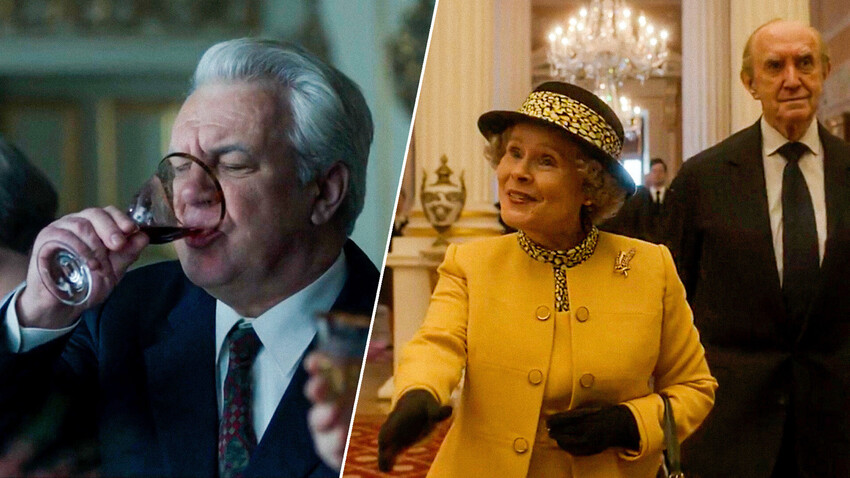
FACT: Blood ties between the Royal Family and the Romanovs
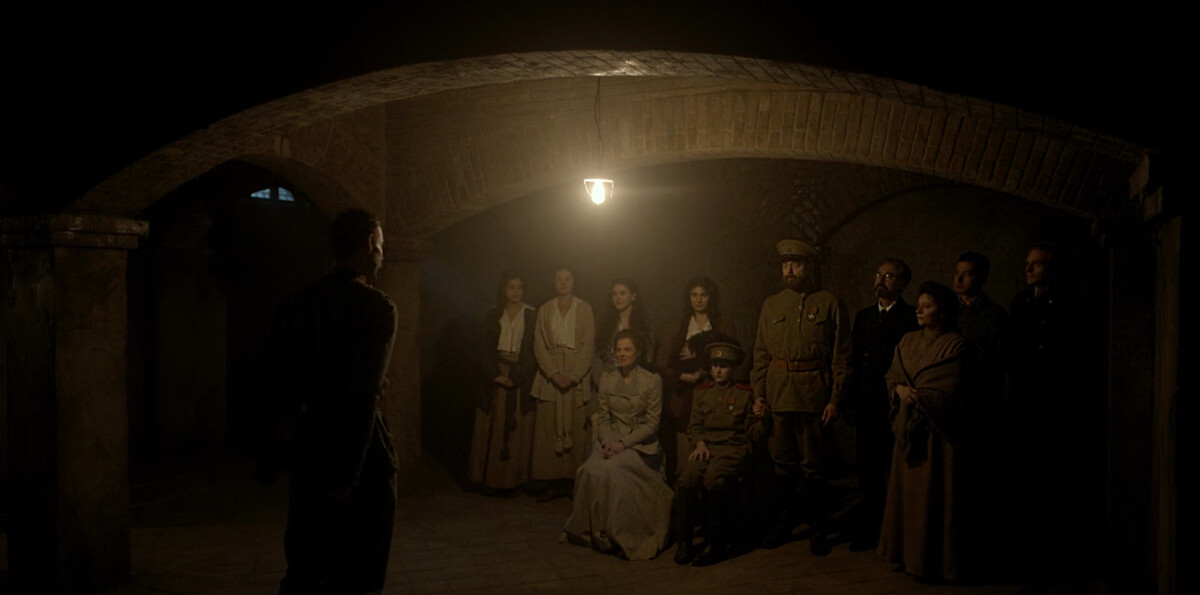
Episode 6 of ‘The Crown’ Season 5 begins with the execution of the Romanov family, a fate the Windsors could easily have saved their relatives from. Scenes from 1918, in which everyone speaks pretty good Russian, are intercut with the king out hunting. It was the king’s consort, Queen Mary, as not only the makers of the film but also some historians believe - who took the decision not to send a ship to rescue the Romanovs . Nicholas II and George V were first cousins and even looked alike. Consequently, Elizabeth II, the granddaughter of George V and particularly her consort, Prince Philip, great grandson of Nicholas I, were very wary about relations with Russia and regarded the Soviet authorities as “regicides”, which is why, during her entire reign, Elizabeth II never once visited the USSR.
FACT: The Queen’s state visit to Russia
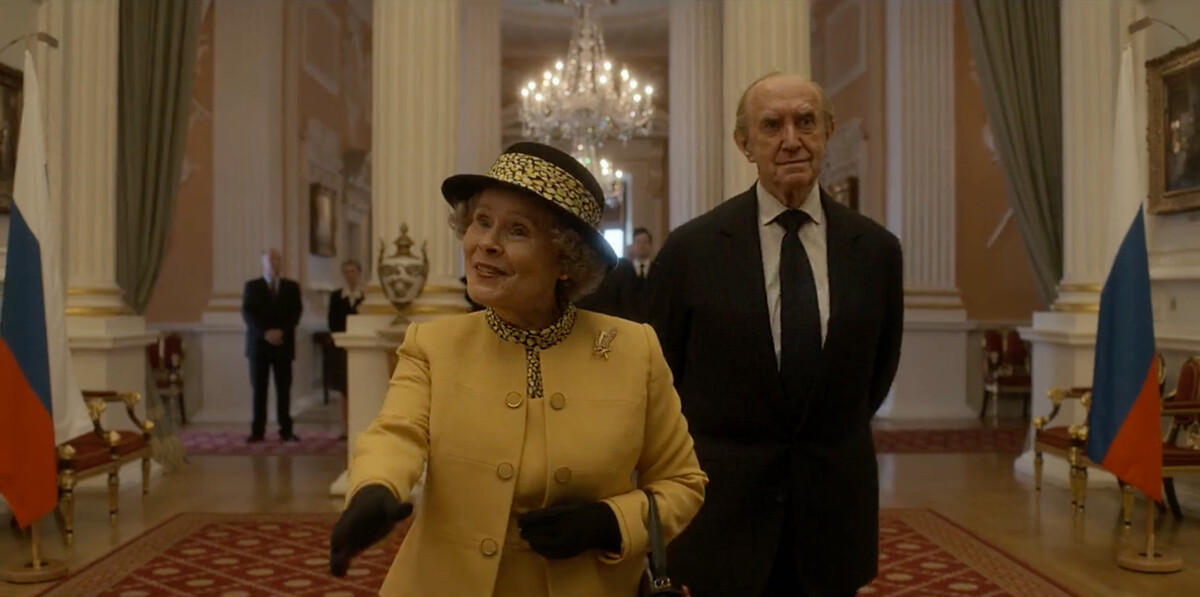
The latest season of ‘The Crown’ covers the first half of the 1990s, when the Soviet Union collapsed and democracy, ushered in by Boris Yeltsin, took the place of communism. It was after the collapse of the USSR and the emergence of an independent Russia that the queen paid her first visit to Moscow and St. Petersburg . It was a historic visit in every sense. She was the first British monarch to come to the Russian state. The queen’s program included all the main sights of Moscow and St. Petersburg, as well as the opening of a special museum dedicated to British history, but this was not included in the series.
FICTION: Reasons for visiting Russia
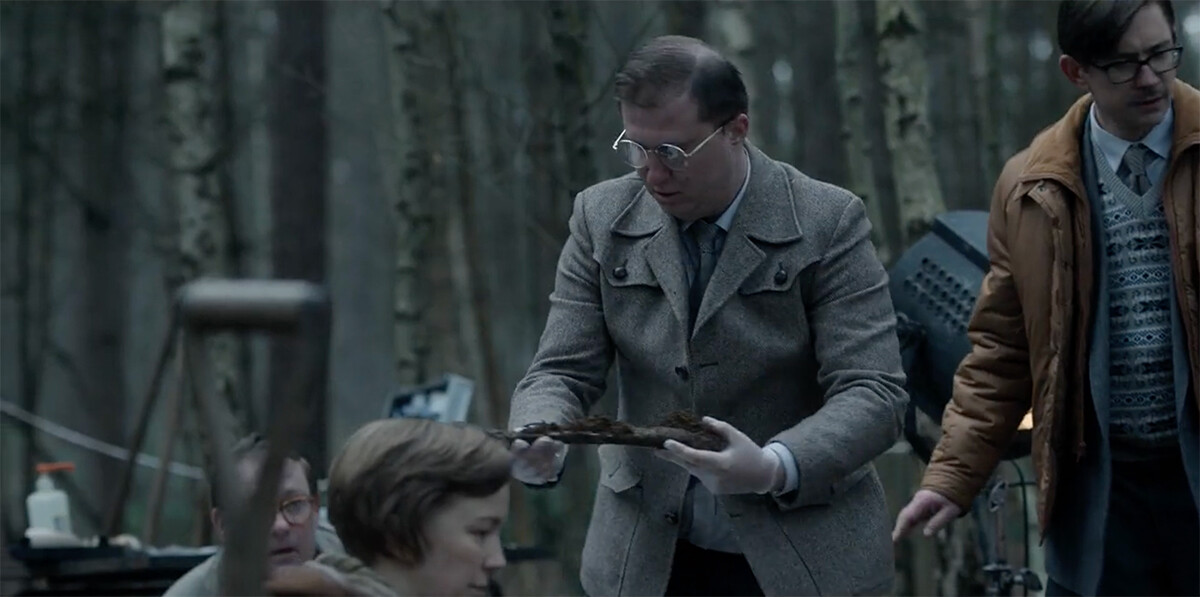
In ‘The Crown’, Elizabeth II visits Russia entirely for personal reasons - she wants to reconnect with her husband, Prince Philip, who, inspired by family links with the Romanovs, had become increasingly immersed in the Orthodox faith and his Slavic roots . According to the series, the Royal couple visit Moscow exclusively for the burial of their ancestors. Prince Philip’s DNA was indeed used for the scientific examination of the remains of the Romanovs, but this was more a consequence of, rather than the reason for, the Royal visit. The interment of the bones discovered in the Urals only took place in the late 1990s, although the forensic tests - involving both Russian and British experts - continued until the 2010s.
Read more: How did Tsar Nicholas II become a saint?
FICTION: A drunken Yeltsin on a tank, on a table and in Buckingham Palace
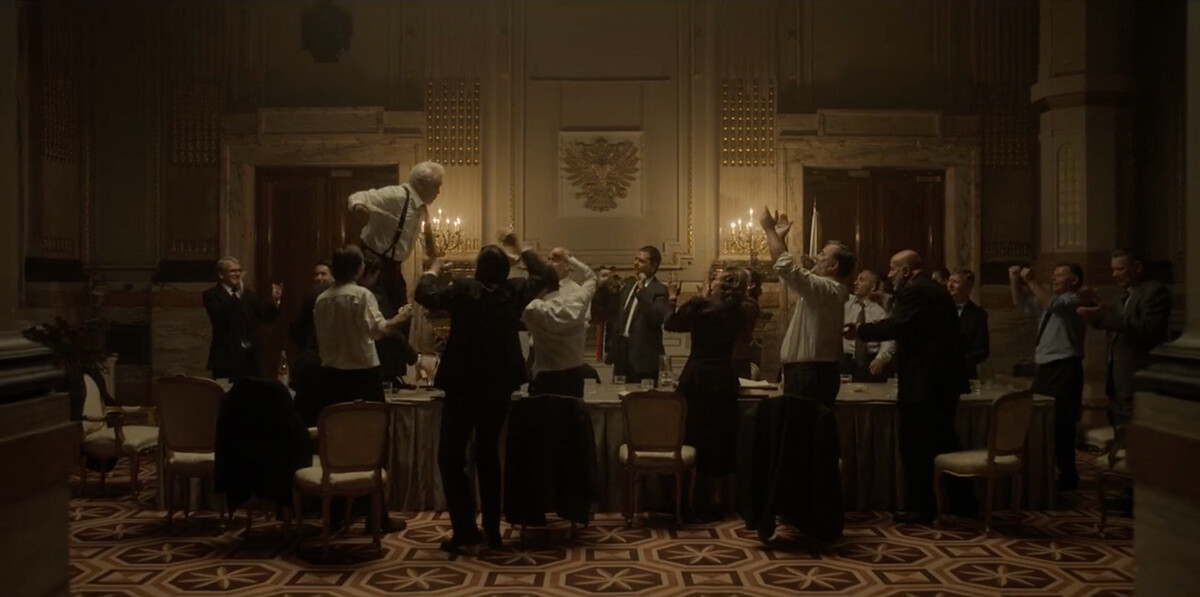
The chronology of ‘The Crown’ season 5 is its weakest element. For instance, Elizabeth’s wish to meet Boris Yeltsin (played by Belarusian actor Anatoliy Kotenyov), the leader of a newly-democratic Russia, arises almost immediately after she sees him on a tank near Moscow’s White House . At the same time, Prime Minister John Major tells the queen that the Russian president has long gone mad and has sunk into alcoholism, to the soundtrack of ‘Kalinka Malinka’, but this does not prevent the queen from receiving Yeltsin and his wife in her palace and then agreeing to a return visit to Moscow. In reality, Yeltsin never went to Buckingham Palace, although his meeting with Major did take place, while his alcohol problems did catch up with him a certain time after his audience with the queen.
FACT/FICTION: Tchaikovsky, Dostoevsky and the decline of the monarchy
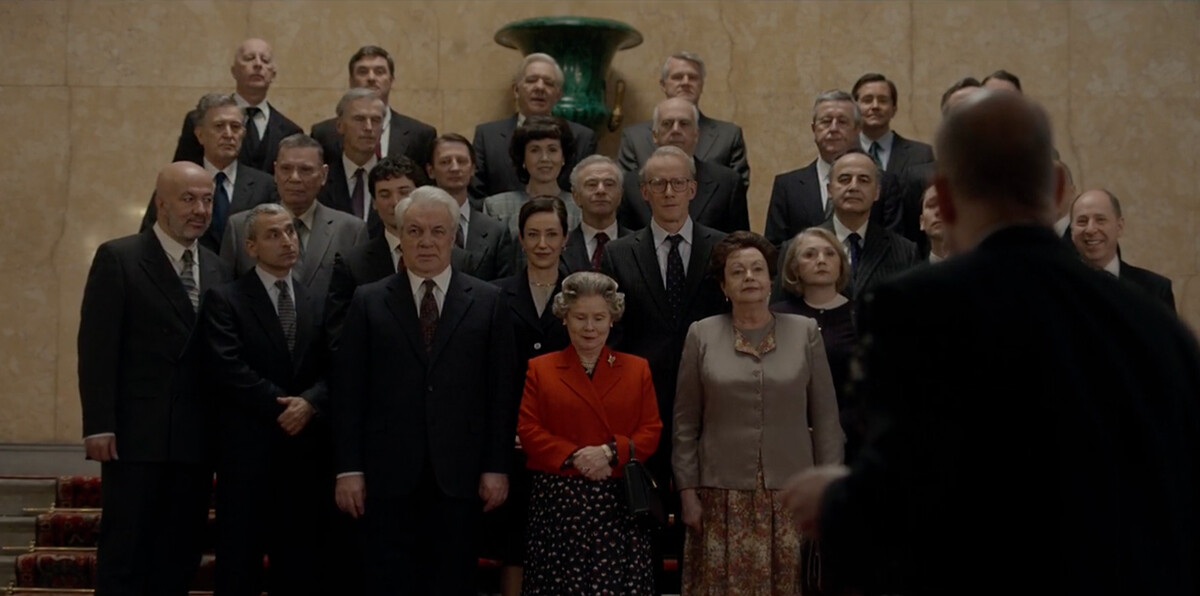
Season 5 of ‘The Crown’ has turned out to be the most intimate of all and the “Russian strand” has played no small part in this. In the very first episode, Prince Charles - the sole member of the Royal Family willing to take a fresh look at the monarchy - listens with interest to a radio report on the collapse of the Soviet Union, while Elizabeth’s ill-starred sister, Margaret, gets ready for a ball to the theme from Tchaikovsky’s ‘Swan Lake’. This foreshadows Diana’s meeting in the final episode with the Al-Fayed family, which is to play a baleful role in the subsequent season. “One of the most memorable accounts of a long, successful marriage comes from Dostoevsky’s wife, Anna. She and Fyodor were, she said, of… contrasting character. Different temperaments. Entirely opposing views, yet they never tried to change one another,” John Major tells the queen. It’s a pity that the House of Windsor took a different route.
Dear readers,
Our website and social media accounts are under threat of being restricted or banned, due to the current circumstances. So, to keep up with our latest content, simply do the following:
- Subscribe to our Telegram channel
- Subscribe to our weekly email newsletter
- Enable push notifications on our website
- Install a VPN service on your computer and/or phone to have access to our website, even if it is blocked in your country
If using any of Russia Beyond's content, partly or in full, always provide an active hyperlink to the original material.
to our newsletter!
Get the week's best stories straight to your inbox
- 10 important facts about the murder of Russia’s royal family
- Why did Britain’s King George V betray Russia’s last tsar?
- How the British royal family is related to the Romanovs
This website uses cookies. Click here to find out more.
Russia-Ukraine War Russian Setbacks Are Hampering Army Recruitment, Says Pentagon Official
- Share full article
- Prudyanka Nicole Tung for The New York Times
- Bakhmut Tyler Hicks/The New York Times
- Derhachi Nicole Tung for The New York Times
- Kapytolivka Nicole Tung for The New York Times
- Izium Nicole Tung for The New York Times
Follow live updates on the Russia-Ukraine war .
Russia is struggling to attract new recruits for its army, a U.S. official says.
WASHINGTON — Russia is struggling to attract recruits for its army amid its setbacks in Ukraine, while the United States is open to potentially sending Western tanks to Kyiv, a senior U.S. defense official said on Monday.
“The Russians are performing so poorly that the news from Kharkiv Province has inspired many Russian volunteers to refuse combat,” the official said, who was not authorized to speak publicly about the status of Russia’s war in Ukraine, adding that the leader of the Wagner Group, a private military company with ties to the Kremlin, had been seen in videos posted on social media asking Russian prisoners, Tajiks, Belarusians and Armenians to join the fight in Ukraine.
“We believe this is part of Wagner’s campaign to recruit over 1,500 convicted felons,” the official said. “But many are refusing.”
Last week, a video posted online and analyzed by The New York Times showed the Wagner Group promising convicts that they would be released from prison in return for a six-month combat tour in Ukraine. It is unclear when the video was filmed.
The official added that Russia was failing in its own strategic objectives, noting that President Vladimir V. Putin of Russia reiterated last week that the “main goal” of his invasion was limited to capturing the Donbas — the eastern Ukrainian region where Russia has recognized as independent two Kremlin-backed statelets but where Ukraine still controls several key cities and towns. And, at a regional summit in Uzbekistan on Friday , Mr. Putin said Russia was committed to its “special military operation,” despite Russian losses in the northeast and Ukraine’s offensive in the south, near the port city of Kherson.
Furthermore, Ukrainian forces now control all of their territory west of the Oskil River in eastern Ukraine, the official said, and have liberated more than 300 settlements in Kharkiv Province.
With Ukrainian troops continuing to take back territory from Russian forces, and the war nearly seven months old, the Pentagon is discussing how best to support Kyiv for a long-term war. Part of that, the official said, includes transitioning Ukraine away from their Soviet-era weaponry and replacing them with those used by NATO and other Western militaries.
While the United States and other nations have provided Ukraine with Soviet-era tanks, the Pentagon signaled an openness to transferring Western main battle tanks to Kyiv as well.
“Armor is a really important capability area for the Ukrainians,” the official said. “We recognize that there will be a day when they may want to transition — and may need to transition — to NATO-compatible models.”
President Volodymyr Zelensky has repeatedly asked Western allies for more equipment and ammunition, saying the counteroffensive underway is dependent on getting more. He alluded to the need to speed up aid deliveries in his nightly address on Monday.
“Pace is very important now,” Mr. Zelensky said. “We speak about this honestly. The pace of providing aid to Ukraine should correspond to the pace of our movement.”
And despite its problems with manpower and organization, Russia still has a significant advantage over Ukraine in supplies and ammunition.
“Tanks are absolutely on the table along with other areas,” said the American defense official. “We’re looking at the entirety of the Ukrainian armed forces and considering for the future what capabilities they will need and how the U.S. and our allies will be able to support Ukraine in building out those capabilities.”
“In terms of the immediate fight, the tanks that are available that could be provided very quickly with little to no training are Soviet-type tanks, but we are certainly open to other options provided that the training, maintenance and the sustainment can be taken care of.”
— John Ismay
Most of the 146 bodies exhumed in Izium so far were civilians, a Ukrainian official said.
Most of the 146 bodies exhumed so far in the northeastern Ukrainian city of Izium were civilians, and some of the bodies showed signs of torture, the leader of the regional military administration, Oleh Synyehubov, said Monday.
“Some of the dead have signs of violent death. There are bodies with tied hands and traces of torture,” Mr. Synyehubov wrote in a post on Telegram . Others had stab wounds or injuries from mine explosions and shrapnel, and two of the bodies belonged to children, he added.
Izium’s mayor, Valery Marchenko, has said that he expected it will take another two weeks to exhume all of the bodies from several mass grave sites in Izium that were discovered after Russian forces retreated in the face of a Ukrainian counteroffensive. The largest of burial site contained about 440 individual graves, a discovery that cast a renewed spotlight on potential war crimes committed during Russia’s six-month occupation of the city.
Investigators say the discoveries recall the broad evidence of atrocities by Russian soldiers in towns like Bucha, near Kyiv, but each body must be forensically examined to determine the cause of death.
Russia’s battering of civilian targets including theaters, hospitals and apartment buildings has prompted months of international condemnation. Some attacks have been indiscriminate because of older, imprecise weaponry, while others have been targeted atrocities , like the killings in Bucha. Last month, the United Nations reported that it had confirmed the deaths of 5,587 Ukrainian civilians , though the true number is thought to be in the tens of thousands.
Russia has often denied responsibility or blamed Ukraine for civilian deaths. On Monday, Kirill Stremousov, the Russian-appointed proxy leader in Kherson, accused Ukraine of killing 13 civilians in targeted shelling in the eastern Donetsk region. The claim could not be independently verified.
Ukrainian officials denied the allegation, saying Moscow was terrorizing civilians in occupied territory to direct attention away from the investigations in Izium before this week’s meeting of the United Nations General Assembly.
“The occupiers have already repeatedly used such a pattern to divert attention from their own crimes,” Ukraine’s national security and defense council said in a Telegram post .
— Carly Olson
Advertisement
A Russian missile hits less than 900 feet from nuclear reactors.

KYIV, Ukraine — A powerful Russian missile exploded less than 900 feet from the reactors at the South Ukraine Nuclear Power Plant just after midnight on Monday, Ukrainian officials said, narrowly avoiding a possible nuclear calamity and underscoring the threat posed by the Kremlin’s assaults on critical infrastructure across Ukraine.
There was no damage to essential safety equipment at the nuclear power plant, which remained fully operational, Ukraine’s national nuclear energy company, Energoatom, said. No casualties were immediately reported.
But the explosion caused extensive damage around a hydroelectric power station in the industrial zone that surrounds the nuclear complex. It forced the shutdown of one of the plant’s hydraulic units and caused partial power outages in the area.
Petro Kotin, the head of Energoatom, told Ukrainian national television that while the heavily fortified concrete buildings that house nuclear reactors are built to withstand a plane crash, the blast from Monday’s strike was powerful enough to have damaged the containment structures had the missile struck closer.
“There is no other way to characterize this except for nuclear terrorism,” he said.
The extent of the damage was still being investigated, officials said, as was the type of missile used. Preliminary information pointed to an Iskander cruise missile, Ukraine’s southern military command said in a statement.
Kyrylo Tymoshenko, the deputy head of the Ukrainian president’s office, said in a statement that the strike had caused a brief disconnection of three power lines at the nuclear plant but that they were automatically reconnected. All of the plant’s reactors were now operating normally, he added, but warned: “A few hundred meters and we would have woken up in a completely different reality.”
The South Ukraine plant, Ukraine’s second-largest functioning nuclear power station, is some 300 miles west of the larger Zaporizhzhia Nuclear Power Plant, which is occupied by Russian forces and has come under repeated shelling.
Energoatom said on Monday that “the Russian army launched a missile attack on the industrial zone of the South Ukrainian nuclear power plant” at 12:20 a.m., causing “a powerful explosion” whose shock wave blew out more than 100 windows at the nuclear plant. The company released security camera footage that showed a massive fireball lighting up the night sky over the site.
The nuclear plant, near the city of Yuzhnoukrainsk in the Mykolaiv region, is part of the South Ukrainian Energy Complex, which includes the hydroelectric plant and one other power station. It lies more than 100 miles north of the city of Mykolaiv and far from any frontline fighting.
Anastasia Kuznietsova contributed reporting.
— Marc Santora
The strike increases concerns about nuclear safety in Ukraine.
KYIV, Ukraine — A missile strike on Monday near the South Ukraine Nuclear Power Plant has rekindled concerns about the safety of Ukraine’s nuclear facilities as Russia steps up attacks aimed at degrading critical energy infrastructure.
Before the war, 15 working reactors at four nuclear power plants produced more than half of Ukraine’s electricity, the second highest share among European nations after France.
The situation at the Zaporizhzhia Nuclear Power Plant — which has been occupied by Russian forces since early in the war but is operated by Ukrainian engineers — appears to have stabilized in recent days after the plant resumed receiving electricity from the country’s power grid on Friday. But its reactors have all been shut down as a safety measure after Energoatom determined that it was too risky to keep them running as fighting continued nearby.
The Zaporizhzhia plant, when it was fully operational, supplied about a fifth of Ukraine’s electricity.
Russia’s assaults on Ukraine’s power infrastructure have continued as its campaign on the battlefield falters. After its forces were driven out of northeastern Ukraine just over a week ago, the Kremlin launched missile strikes on a major heat and power plant in Kharkiv , briefly plunging the region into blackout.
Ukrainian officials have said they can still produce enough energy to meet the nation’s needs this winter, but damage to critical infrastructure in towns and cities will make it difficult to transmit electricity to hundreds of thousands of consumers.
Those living in territory recently reclaimed by Ukrainian forces, and in other parts of the country hit hard by fighting, have been urged to evacuate or not to return home until the fighting is over. And for the estimated 1.2 million people living in parts of Ukraine occupied by Russian forces, access to electricity is unclear. In some places, heating, water and power infrastructure have been destroyed or badly damaged. Blackouts are frequently reported in parts of occupied southern Ukraine.
President Volodymyr Zelensky said Moscow’s strikes on energy infrastructure were intended to make Ukrainians suffer as temperatures drop, and to prevent Kyiv from exporting energy to other parts of Europe, where sanctions against Russian energy have contributed to soaring gas and electricity bills , creating havoc for consumers and businesses.
“Russia is trying to prevent us from using Ukraine’s capabilities to stabilize the situation in Europe,” he said last week. “Our ability to export electricity is something that Russia is very afraid of right now. Because we can foil Russian plans to squeeze every penny out of ordinary European citizens this winter as energy prices are expected to skyrocket.”
Andriy Yusov, a spokesman for the Ukrainian military’s intelligence agency, said recently that nuclear power was essential to Ukraine’s energy production, and that Russia would therefore be planning further attacks, raising the risk of nuclear accidents.
“The Russian invaders consistently and systematically shell the whole energy infrastructure of Ukraine, and this definitely may eventually involve other nuclear facilities, other nuclear power plants,” he said.
After Putin acknowledges Xi’s ‘concerns,’ Russia and China pledge closer cooperation.
Senior officials from Russia and China have agreed to carry out more joint military exercises and enhance defense cooperation, according to statements on Monday, signaling that whatever misgivings Beijing may have over the war in Ukraine, the nations’ strategic partnership was only growing closer.
Nikolai P. Patrushev, the leader of Russia’s Security Council, and China’s top diplomat, Yang Jiechi, held a meeting in southeastern Fujian Province where they agreed to conduct more joint military drills and patrols and to strengthen coordination between their countries’ defense officials, according to the Russian agency’s statement .
“The two countries continue to deepen strategic coordination, always firmly support each other on issues concerning each other’s core interests and major concerns,” China’s Ministry of Foreign Affairs said in a summary of the meeting.
The visit came days after President Vladimir V. Putin met in Uzbekistan with Xi Jinping, the Chinese leader, and acknowledged afterward that China had “ questions and concerns ” about the situation in Ukraine. That cryptic admission prompted some analysts to conclude that despite public pronouncements that the nations’ friendship had “no limits,” Mr. Xi’s support for Mr. Putin was not unconditional.
Though Mr. Xi did not publicly refer to the situation in Ukraine during the meeting in Uzbekistan, he said that China was “willing to work with Russia to demonstrate the responsibility of a major country, play a leading role and inject stability into a turbulent world,” according to a Chinese government statement. Some experts said the statement sounded like a rebuke to Moscow for creating instability with its invasion.
Neither side pointed to any such differences following the meeting between top officials on Monday.
Mr. Yang emphasized the relationship between Mr. Xi and Mr. Putin, adding, “The leadership of the heads of state is the fundamental guarantee for the stability and long-term vitality of bilateral relations.”
Speaking in Fujian, Mr. Patrushev said, “The cooperation between Russia and China in the security field has deep historic roots.”
“In the current conditions, our countries must express an even better readiness for mutual support and development of cooperation,” said Mr. Patrushev, according to Interfax, a Russian news agency. Mr. Patrushev also met with Wang Xiaohong, a senior Chinese security official.
Mr. Putin’s invasion of Ukraine has complicated China’s balancing act between Russia and the West. China has provided a lifeline to Russia, largely mitigating the effect of Western sanctions that have curtailed Russia’s energy exports and halted its industrial cooperation with developed countries.
This year, trade between Russia and China has increased by more than a quarter, and China agreed to work on a major gas pipeline project via Mongolia that could offset Russia’s cutoff from the European energy market.
At the same time, however, China has been careful not to run afoul of its Western trading partners. It has not shipped weapons to Russia, which has instead turned to suppliers including Iran and North Korea, according to U.S. officials, and it has done little to help Moscow circumvent sanctions that prevent it from importing advanced Western technology.
Russia’s foreign minister, Sergey V. Lavrov, said that Russian and Chinese officials would coordinate closely at the United Nations General Assembly in New York this week.
— Ivan Nechepurenko and Austin Ramzy
Ukraine’s military claims it has crossed a river that Russia marked as a defensive line.
Ukraine’s military said on Sunday that its forces had crossed the Oskil River, which has emerged as the new front line in the northeast after the recent rout of Russian forces from the Kharkiv region.
Since withdrawing from Kharkiv amid a lightning Ukrainian offensive this month, Russian forces have established a new defensive line along the Oskil, which flows south toward the eastern regions of Donetsk and Luhansk. Last week, Russia’s Defense Ministry released a map that showed Russian forces had withdrawn to the eastern side of the river, about 10 miles east of the city of Izium.
On Sunday, Ukraine’s military posted a video that it said showed its forces crossing to the eastern bank.
“The Armed Forces of Ukraine crossed Oskil,” the Ukrainian military’s Strategic Communications Department wrote in a post on Telegram, a messaging app. The post appeared to claim that Ukrainian forces hold both sides of the river, adding: “Since yesterday, Ukraine also controls the left bank.”
It did not provide further details on where the crossing took place, and the claim was impossible to independently verify.
Over the weekend, the Institute for the Study of War, a Washington-based research organization, said that Ukrainian forces appeared to be expanding positions east of the Oskil .
Rivers have often proved formidable defensive barriers since Russia’s invasion began in February. For Russia, the Oskil represents the last natural barrier before the border with Donetsk Province. Beyond that lies the Luhansk region, which Moscow’s forces have fully controlled since bloody battles over the summer.
If Ukrainian forces were to establish control of part of the eastern bank, it would suggest that Russian forces were not using the river as a defensive line, and that there might be little in the way to block Ukraine’s military from advancing into Donetsk and Luhansk, which are collectively known as Donbas. The complete capture of Donbas is a major strategic objective of President Vladimir V. Putin’s invasion.
Matthew Mpoke Bigg and Andrew E. Kramer contributed reporting.
— Cassandra Vinograd
O.S.C.E. condemns 13-year prison term for two staff members in occupied territory as ‘repugnant.’
A court in Russian-occupied eastern Ukraine on Monday sentenced two Ukrainian staff members of the Organization for Security and Cooperation in Europe to 13 years in prison on treason charges, a move the regional security organization castigated as “inhumane and repugnant.”
The workers “have been held unjustifiably for more than five months in unknown conditions for nothing but pure political theater,” the O.S.C.E. chairman, Zbigniew Rau, who is also Poland’s foreign minister, said in a statement .
Helga Maria Schmid, the O.S.C.E. secretary general, called for the immediate release of the staff members, Dmytro Shabanov and Maxim Petrov, along with a third unnamed staff member she said had been detained. The O.S.C.E. said all three are Ukrainian nationals.
The O.S.C.E., which counts Ukraine and Russia among its 57 members, is a regional security organization that, among other things, promotes peace, human rights and arms control and helps monitor elections.
According to Tass, the Russian news agency, authorities in the so-called Luhansk People’s Republic, one of two breakaway regions in eastern Ukraine that Russia has recognized, accused Mr. Petrov of gathering information about the region’s military and passing it on to a senior U.S. official. The details of the allegations against Mr. Shabanov were not immediately clear.
Ms. Schmid said the two men had been performing official duties before they were detained in April; Mr. Petrov was a translator and Mr. Shabanov was a security assistant. “Our colleagues remain O.S.C.E. staff members and had been performing official duties as mandated by all 57 participating states,” she said.
In July, an O.S.C.E. report highlighted the growing international concern over reports of abuses involving Russia’s so-called filtration camps, including the eventual executions of some detainees. The report was released after a statement by U.S. Secretary of State Antony J. Blinken that said Russian authorities had “interrogated, detained, and forcibly deported” as many as 1.6 million Ukrainian citizens, including 260,000 children, into distant Russian territory.
It is not the first time a court in Russian-occupied eastern Ukraine has handed down a sentence that has attracted loud criticism. In June, two Britons and a Moroccan who had fought for the Ukrainian armed forces were sentenced to death by a court in the breakaway Donetsk region after being accused of being mercenaries.
— Dan Bilefsky
World leaders gather in New York under the shadow of the Ukraine war.
The 77th session of the United Nations General Assembly, the largest annual gathering of world leaders, kicks off on Monday after pandemic restrictions restricted in-person attendance the previous two years. But the mood is likely to be a somber one, tempered by the war in Ukraine and mounting economic and environmental crises.
The assembly will focus on the many challenges with which leaders are now grappling: a war in Ukraine that is polarizing the world order in ways not seen since the Cold War; the rippling impact of rising food prices on people across the world; the energy crisis roiling the global economy; and concerns over climate disruptions such as the devastating floods in Pakistan.
“The General Assembly is meeting at a time of great peril,” António Guterres, the secretary-general of the United Nations, said last week. “Our world is blighted by war, battered by climate chaos, scarred by hate, and shamed by poverty, hunger, and inequality.”
Mr. Guterres said the gathering of world leaders in New York must provide hope through dialogue, debates and concrete plans to overcome divisions and crises.
It is a tall order. About 157 heads of state and representatives of governments plan to deliver speeches from Tuesday through Sunday, and the war in Ukraine and its ramifications are expected to be the major theme.
President Volodymyr Zelensky of Ukraine will address the assembly in a prerecorded video speech. The General Assembly voted on Friday to grant him an exemption to the rule mandating that all speeches must be delivered in person this year.
Food insecurity, from grain shortages to price increases, will also be a priority. Developing countries in Asia, Africa and the Middle East are expected to voice concerns that the world is too fixated on the war in Ukraine and that humanitarian aid is disproportionately directed at relieving that crisis, and that their own ones are being ignored.
Tensions are expected to be high between Russia, the United States and European countries over Ukraine; between China and the United States over Taiwan and trade; and between developing nations and the West over the allocation of development funding and other aid.
“This is the first General Assembly of a fundamentally divided world,” said Richard Gowan, the U.N. director at International Crisis Group, a Brussels-based research group. “We have spent six months with everyone battering each other. The gloves are off.”
Several thematic summit meetings and round tables are scheduled on issues ranging from education to the pandemic.
Mr. Guterres on Wednesday will host two meetings attended by foreign ministers. One will be on the challenges brought by the Ukraine war, including price hikes for food and energy, and the economic strain it has caused. The other will be about climate action. Mr. Guterres said he plans to tell leaders that the time to act is now.
— Farnaz Fassihi
McDonald’s begins to reopen restaurants in Ukraine this week.
Three McDonald’s restaurants will reopen in Kyiv this week, a company spokeswoman said on Monday, fulfilling a pledge the chain made last month to bring employees back to work even as the war persists.
On Tuesday, the restaurants in Kyiv will open exclusively for delivery, Alesya Mudzhyri, McDonald’s head of communications in Ukraine, wrote in a Facebook post , with expanded safety protocols to keep employees safe. All 109 McDonald’s restaurants in Ukraine closed after Russia invaded in February.
McDonald’s is carrying through with its commitment to restore “a small but important sense of normalcy,” which it first expressed in August when the fast-food franchise shared plans to open the restaurants. At the time, Paul Pomroy, a vice president for international operations, said employees had expressed a “strong desire” to return to work after many fled the country and others joined the military. The company did not immediately respond to a request for comment.
Over the next two months, McDonald’s restaurants in Kyiv and western Ukraine will reopen. In October, restaurants that reopen will be able to host customers in person and via drive-through windows, Ms. Mudzhyri’s post said. The restaurants are set to open from 9 a.m. to 9 p.m. but will close during air raid alerts to give employees and customers time to go to nearby shelters.
McDonald’s has 39,000 restaurants in more than 100 countries. In Russia, where it had 840 restaurants, the company stopped operating after the invasion and put the franchise up for sale. The Russian restaurants were purchased by a Siberian oil mogul and reopened in June under a different name .
— Isabella Simonetti
Ukraine’s president meets with BlackRock about setting up a reconstruction fund.
President Volodymyr Zelensky of Ukraine met with Laurence D. Fink, the head of BlackRock , the world’s largest manager of assets, to discuss how to attract investment in the country’s war-ravaged economy.
In a videoconference, the two discussed how BlackRock, which oversees $8.5 trillion invested all over the world, could provide “pro bono advice to the Ukrainian government on setting up a reconstruction fund in support of the recovery of the Ukrainian economy,” according to a statement released on Monday by Mr. Zelensky’s office. (The call was held Thursday.) The fund would be arranged for “both public and private investors to participate in reconstructing and rejuvenating the market economy in Ukraine,” the statement said.
“We’ve shown that we know how to win on the battlefield,” Mr. Zelensky said in the statement. “Another important task for us is to achieve victories in the economy as well, and to be an attractive country for investors.”
The advice would be provided by BlackRock’s Financial Market Advisory team, which works with financial institutions, regulators and governments, and is separate from the company’s investment management business.
Estimates of the cost to rebuild the infrastructure hit hardest by the war with Russia, and revive the country’s shattered economy , vary widely. The Ukrainian government has put the bill at $750 billion , while others have estimated $100 billion , still a significant sum. The International Monetary Fund has said Ukraine needs $5 billion per month to pay government salaries and pensions, and to cover other expenses. The fund has already provided over $1 billion to help Ukraine keep up on government debt payments.
Much of the money to rebuild Ukraine’s economy would probably come from donor countries, in the form of grants or long-term loans, given the precarious state of the Ukrainian government’s finances. The United States , the European Union and others have provided billions of dollars in security assistance to Ukraine, in addition to pledging extensive economic aid.
Attracting private investors in Ukraine is challenging while the war still rages. Ukraine’s government has encouraged entrepreneurs with grants, zero-interest loans and other financial support, with companies large and small restructuring and relocating , altering the country’s economic geography. An end to the fighting, along with extensive insurance and other arrangements to attract international private investment in Ukraine’s fragile economy, would be necessary before Ukraine could “restore a normal investment climate,” as Mr. Zelensky described his goals in the statement.
Many of Ukraine’s public and private lenders, including BlackRock, have agreed to a freeze on payments on tens of billions of dollars in debt.
Ukraine’s postwar investment push also has to overcome perceptions of systemic corruption. Transparency International, an anticorruption watchdog, ranked Ukraine 122nd out of 180 countries on its corruption index in 2021.
— Jason Karaian
Ukraine’s first lady attends Queen Elizabeth II’s funeral.
As President Volodymyr Zelensky of Ukraine oversees a counteroffensive against Russia at home, his wife, Olena Zelenska, joined scores of world leaders in London to attend Queen Elizabeth II’s funeral.
More than 100 world leaders, among them President Biden and Emperor Naruhito of Japan, traveled to London for the state funeral in Westminster Abbey .
Ms. Zelenska’s visit was her first to England since Russia invaded her country in late February. Before the state funeral ceremony on Monday, she visited the queen’s lying-in-state in London on Sunday and met with Catherine, Princess of Wales.
Mr. Zelensky has extended his condolences to the royal family and the Commonwealth, calling the queen’s death a “great loss for all of Europe, for the world.”
Britain has been a steadfast ally of Ukraine in the face of Russia’s invasion, and the queen expressed support.
“In this most challenging year, I hope that today will be a time for the Ukrainian people, both in Ukraine and around the world, to celebrate,” she wrote in an August message that was shared by Britain’s embassy in Ukraine on the country’s independence day.
On their 31st anniversary of Independence, Her Majesty The Queen congratulates Ukrainians. In her address to the President of Ukraine she said: pic.twitter.com/01JQWif1K3 — UK in Ukraine 🇬🇧🇺🇦 (@UKinUkraine) August 24, 2022
The queen also made a donation to the U.K. Disasters Emergency Committee for its humanitarian efforts in the conflict in March.
Ms. Zelenska expressed “deep gratitude” for that support in a Twitter message after the funeral on Monday, saying it had been a “great honor” to be present to bid the monarch farewell.
“She wished us better times and shared our desire for freedom,” Ms. Zelenska wrote. “We will always remember it.”
Ms. Zelenska made the trip to England with Ukraine’s prime minister, Denys Shmyhal, who met with Canada’s prime minister, Justin Trudeau, on Sunday to discuss the conflict.
Ukrainian officials said last week that they had found more than 400 graves in the forest of the newly reclaimed city of Izium in northeastern Ukraine.
In a statement on Sunday, Mr. Trudeau described the discovery as further evidence of war crimes by Russian soldiers, and called for full accountability.
— Cora Engelbrecht
Russian bullets dashed an opera singer’s dreams. Then he reclaimed his voice.
ULM, Germany — It was the most pivotal performance of his 29 years. There were no costumes, no stage, no orchestra pit. Instead, a lone pianist hunched expectantly over her instrument. For an audience, a handful of doctors and nurses watched from a cool white hospital lobby.
Sergiy Ivanchuk — his face patched with bandages, legs trembling beneath his trousers — began hesitantly. But as his deep baritone held, confidence grew. By the time he finished with a Ukrainian folk tune, his song soared with the passion of a man brought back from the dead, a man reveling in a voice reclaimed.
“For three months, I thought I would die,” he told those assembled. “And now, I can sing again.”
Not long before, Mr. Ivanchuk had believed he was on his deathbed, his lungs punctured by bullets, his body attached to a tangle of tubes.
On March 10, Mr. Ivanchuk, an aspiring opera singer, had been working with humanitarian volunteers helping civilians flee the besieged Ukrainian city of Kharkiv when Russian forces attacked, and he was shot.
Even if he managed to survive, he remembered thinking, surely his singing days were over.
But a string of chance encounters, committed doctors and the love of a mother all led to that unexpected performance in a German military hospital this summer, giving Mr. Ivanchuk a chance to transform a tragedy into an opportunity to salvage his longtime dream of opera stardom.
“So many different circumstances had to happen,” said Mr. Ivanchuk, wondering if science and his own spirit were the only factors in his recovery. “There is something. God or an angel saved me. There is something there.”
— Erika Solomon and Lena Mucha For The New York Times

Royal Visits Ukraine for First Time Since Russian Invasion
S ophie, the Duchess of Edinburgh, became the first member of the British royal family to visit Ukraine since Russia launched its full scale invasion of the country in February 2022. Sophie is the wife of Prince Edward , the youngest child of Queen Elizabeth II , and brother of King Charles III .
The Duchess met Ukraine’s President Volodymyr Zelensky and First Lady Olena Zelenska during the Monday visit. She toured Bucha to “demonstrate solidarity with the women, men, and children impacted by the war.”
While there, she laid down flowers at a memorial site in Bucha commemorating the over 400 people killed during the Russian occupation. Ukrainian authorities in April 2022 accused departing Russian forces of committing war crimes in a scene reminiscent of “a horror movie.” Zelenska also met with survivors of sexual violence and torture.
Read More: A Visit to the Crime Scene Russian Troops Left Behind at a Summer Camp in Bucha
Sophie has been focused on championing the rights of survivors of conflict-related sexual violence for several years, announcing her commitment to the U.K.’s Preventing Sexual Violence in Conflict Initiative in 2019. “Women and girls pay the highest price in terms of human costs,” she said on Monday at an evening reception at the residence of the U.K.’s ambassador to Ukraine, per the BBC . “Rape is used to demean, to degrade, and to destroy.”
The royal family, which is usually careful about staying neutral on most matters of politics, has been unusually outspoken about its support for Ukraine.
King Charles referred to Russia’s invasion as a “unprovoked attack” in a statement marking the second anniversary of the invasion this past February. “I continue to be greatly encouraged that the United Kingdom and our allies remain at the forefront of international efforts to support Ukraine at this time of such great suffering and need,” he said.
Read More: King Charles III Sends Message to Ukraine on Anniversary of Russia’s Invasion
In March 2023, the Prince of Wales visited Poland on a “personal mission” and praised British troops working near the Ukraine border.
And in February, the Queen welcomed First Lady Zelenska to Clarence House where they discussed how the U.K. can best support Ukraine.
The U.K. has pledged nearly £5 billion in non-military aid to Ukraine since the war broke out, including over £660 million of bilateral assistance that prioritizes women and girls.
Contact us at [email protected] .

First British royal visits Ukraine since Russian invasion began
Unc's rj davis, acc player of the year, returning for fifth season with tar heels, drury, noesen help hurricanes beat islanders 6-3 to clinch nhl playoff 1st-round series in 5 games, hurricanes will clash with rangers in second round of stanley cup playoffs, seeking qb after maye, unc adds former backup via transfer portal, what marijuana reclassification means for the united states.

WRAL Late News
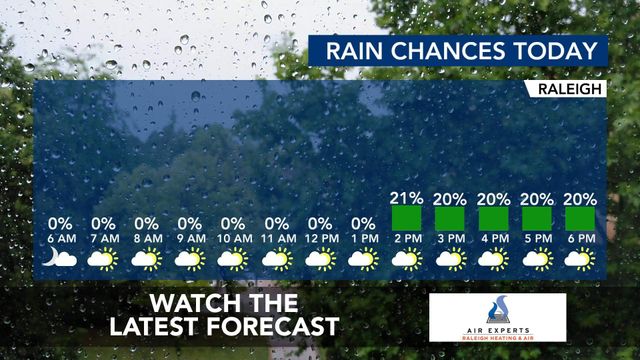
WRAL WeatherCenter Forecast

Evening Pick 3 Pick 4 and Cash 5

Mega Millions Drawing
Nchsaa board of directors holds first day of spring meeting.

COMMENTS
Queen Elizabeth II of the United Kingdom of Great Britain and Northern Ireland, her husband Prince Philip, Duke of Edinburgh and Foreign Secretary Douglas Hurd made a state visit to Russia from 17 to 20 October 1994, hosted by the President of Russia, Boris Yeltsin. It is the first and so far only visit by a reigning British monarch on Russian ...
Queen Elizabeth was not the first British royal to visit Russia. In 1973, Prince Philip and Princess Anne attended a horse eventing competition in Kyiv, then part of the Soviet Union, and in 1994 ...
WATCH: Queen Elizabeth was the first British monarch to visit Russia. Queen Elizabeth II, photographed in 1993. RollingNews. On Oct 17, 1994, Queen Elizabeth II became the first ruling British monarch to set foot on Russian soil. As the eyes of the world are on Russia and the invasion of Ukraine, which has caused I migration of refugees unlike ...
(20 Oct 1994) Britain's Queen Elizabeth II visited the tsarist Russia's capitalSt. Petersburg on Thursday (20/10), the fourth day of her statevisit to the fo...
(18 Oct 1994) Queen Elizabeth II took a tour of the Kremlin with President BorisYeltsin on Tuesday (18/10) and laid a wreath at a memorial toSoviet soldiers ...
After the collapse of the Soviet Union, Queen Elizabeth II made a historic visit to Russia in 1994, becoming the first ruling British monarch to set foot on Russian soil. The Queen was hosted by ...
In preparation for the Queen's visit, some New Zealand sheep were dyed in the UK flag colors of red, white and blue. ... In 1994, in another royal first, the Queen visited Russia. Over the three ...
MOSCOW —. Queen Elizabeth II, leaving behind the latest Royal Family flap, came to the Kremlin on Monday on the first visit to Russia by a British monarch. A new authorized biography of her son ...
The Queen's first and only visit to Russia took place in 1994. Then President Yeltsin led the country. Interesting fact: Elizabeth II became the first reigning monarch to set foot on Russian lands. As early as the 16th century, there were attempts to establish direct contact between the monarchs of Russia and Great Britain: Ivan the Terrible ...
Presentation of a book of the Six Decades of H.M.The Queen's Commonwealth and State Visits, 18 December 2012. Queen Elizabeth II undertook a number of state and official visits over her 70-year reign (1952 to 2022), as well as trips throughout the Commonwealth, making her the most widely travelled head of state in history.She did not require a British passport for travelling overseas, as all ...
MOSCOW, Oct. 17 -- Queen Elizabeth II arrived in Moscow Monday for a four-day visit that marks the first trip ever to Russia by a reigning British monarch. The queen was taken directly from the ...
October 17, 1994 at 8:00 p.m. EDT. MOSCOW, OCT. 17 -- Britain's Queen Elizabeth II arrived in Russia today for a visit that draws a symbolic close to seven decades of royal frostiness toward ...
In June 2003, Russian President Vladimir Putin made a State Visit to Britain. As Head of State, Queen Elizabeth II was deployed in her role as Britain's most...
LONDON, Oct. 11 -- Queen Elizabeth II's visit to Russia, the first ever by a reigning British monarch, is to seal the improved relationship between the two countries, Foreign Office officials said ...
Russia: 1994 Another historic event was the Queen's visit to Russia in October 1994, constituting her first trip to the country. Hosted by Boris Yeltsin, the first president of Russia following the dissolution of the Soviet Union, a spokesman for Yeltsin commented on the significance of the moment, stating, 'We realise that the British ...
The British monarch passed away at the age of 96 on September 8, 2022. Regretfully, Russia Beyond recalls her visit to Russia and meetings with Russians. Elizabeth II always treated Russian with ...
The Queen's three-day visit in October 1994 marked the first time a ruling British monarch had visited Russia — and it remains her only visit to the country. She was accompanied by her husband ...
Here is a full list of all the countries and states the Queen travelled to during her reign, and the dates when she visited. Algeria (1980) Antigua and Barbuda (1966, 1977, 1985) Australia (1953 ...
FACT: The Queen's state visit to Russia. Peter Morgan/Netflix, 2022 The latest season of 'The Crown' covers the first half of the 1990s, when the Soviet Union collapsed and democracy ...
The visit came days after President Vladimir V. Putin met in Uzbekistan with Xi ... Britain has been a steadfast ally of Ukraine in the face of Russia's invasion, and the queen expressed support.
She visited Russia in 1994, the only reigning British monarch to do so, and hosted Putin for a state visit in 2003 at a time when he was still seen as a potential partner by the West.
Britain's Sophie, Duchess of Edinburgh, visits the memorial to the victims of the Russian occupation in the town of Bucha on April 29, 2024, amid the Russian invasion of Ukraine. The visit, to ...
The Duchess of Edinburgh has become the first member of the British royal family to visit Ukraine since Russia's invasion in 2022, Buckingham Palace announced on Monday. Sophie, the Duchess of ...
(CNN) — The Duchess of Edinburgh has become the first member of the British royal family to visit Ukraine since Russia's invasion in 2022, Buckingham Palace announced on Monday.
More unusually, they received gifts in return: a large stuffed toy Jack Russell, based on the Queen's own dog, Beth, for six-year-old Della Thomas, and three books for 11-year-old Ellis Edwards ...